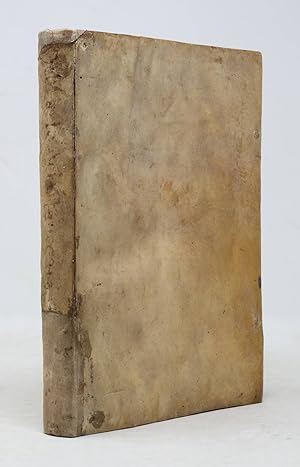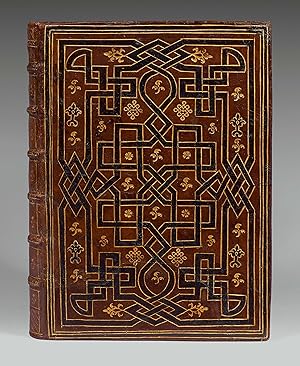l art (650 résultats)
Type d'article
- Tous les types d'articles
- Livres (556)
- Magazines & Périodiques
- Bandes dessinées
- Partitions de musique (4)
- Art, Affiches et Gravures (79)
- Photographies
- Cartes (3)
-
Manuscrits &
Papiers anciens (8)
Etat
Reliure
Particularités
- Edition originale (131)
- Signé (19)
- Jaquette (20)
- Avec images (457)
- Sans impression à la demande
Livraison gratuite
Pays
Evaluation du vendeur
-
Memoires du voiage de Constantinople de Jacques de Bracle seigneur de Bassecourt. Manuscrit du XVIe siècle.
Edité par No place, ca. 1570., 1570
Vendeur : Antiquariat INLIBRIS Gilhofer Nfg. GmbH, Vienna, A, Autriche
4to (210 x 135 mm). French manuscript on paper. 90 ff. Flemish Bastarda in black ink, 26 lines. Bound with 16 strictly contemporary specimens of Turkish silhouette paper, a series of 28 watercolours, heightened in gilt and two extensive, early 19th century manuscript additions (complete transcript of the the travelogue and a biography of the author). Slightly later vellum with ms. title. Unique, fascinating and unpublished manuscript containing the account of a diplomatic journey to the Ottoman Empire in 1570. Braeckle (1540-71), a Flemish physician, "assisted Charles Rym Baron de Bellem, Ambassador of Maximilian II in Constantinople, probably as a secretary. He wrote an account of his journey, which contains interesting details about the places he visited, the manners and customs of the inhabitants, incidents, etc." (Aug. Vander Meersch, in: Belgian National Biography II, 903). Leaving Prague on 13 March 1570, the mission passed through Vienna and then Hungary and Czechoslovakia before entering Ottoman territory, visiting the mosques and caravanserais of Sokollu Mehmed Pasha (c. 1505-79), Grand Vizier of Sultan Selim II (1524-74) who ruled the Turks at the time of Rym's and Braeckle's journey. Their stay in Constantinople lasted from 31 May to 12 August 1570, permitting the author to describe several monuments and works of art. During the journey back they travelled through Bulgaria, Serbia (they were held in Belgrade for nearly a month), and Hungary. The mission ended with their return to Germany on 23 October 1570. Jacques de Braeckle died shortly afterwards, in 1571. - The ms. is accompanied by a beautiful set of 28 original watercolours heightened in gilt. Showing Turkish people in traditional costumes, such illustrations were usually fashioned for sale to travellers in Constantinople or passed on to western merchants. However, as the present set includes the caravanserai of the diplomatic legation, it is extremely likely that these were created with the sole purpose of illustrating the diplomatic mission of Charles Rym, described within the present manuscript. The figures are captioned next to the subjects (16th century Italian script in black ink), indicating that the legends were recorded after the plates were collated and sewn together, or that they were included in books before insertion into the present volume. Among the illustrations are the caravanserai of the ambassadors to Constantinople, Sultan Selim II, the Mufti, costumes of Ottoman dignitaries and the military, a Persian, a Moor of Barbary, a lady in burqa, a Bulgarian, a giraffe, etc. The author of the Italian captions may have been the ambassador Edoardo Provisionali: he was responsible for several diplomatic missions and is known to have appreciated the Ottoman culture; furthermore, de Braeckle left Constantinople in his company (cf. Yerasimos). The manuscript is also bound with 16 remarkable specimens of 16th c. Turkish paper (title in French in pen on the first sheet: "papier de Turquie"). At the beginning of the volume is a transcription, calligraphed in an elegant French cursive of the early 19th century (18 unnumbered ff., black ink, 21 lines per page). The volume ends with a short biography of the author (2 pp., black ink, with the arms of de Braeckle). Yerasimos provides a detailed chronology of the journey, listing the major cities visited as well as monuments and curiosities noted by the travellers. - Only three manuscript copies of the present travelogue are recorded, mostly restricted to family use: two copies are in the National Archives of Belgium in Brussels (Fonds 692 Lalang, 8f., cf. Yerasimos); a third copy is bound in a miscellany and kept at the communal Archives of Ghent. - Binding rubbed, spine detached, in excellent condition internally. - Stéphane Yerasimos, Les Voyageurs dans l'Empire Ottoman (XIVe-XVIe siècles), Ankara, 1991, pp. 286f. Not in Blackmer or Atabey.
-
Latin manuscript on vellum.
Edité par Northern France, ca. 1500., 1500
Vendeur : Antiquariat INLIBRIS Gilhofer Nfg. GmbH, Vienna, A, Autriche
Manuscrit / Papier ancien
Large 8vo (ca. 140 x 203 mm). 105 ff. (without blank leaf 82), numbered in roman numerals, with 2 page-sized and 23 small miniatures as well as 3 large and 438 smaller initials, all in colours and gilt. Mostly 29 lines per page in an elegant black bastarda with red (and occasional gilt) headings and emphases; numerous rubrications and small initials in gilt on blue or red background. Leaves 101r-105r contain somewhat later additions in red and black ink; 2 unnumbered vellum leaves with a table of contents in red ink bound at the end (probably contemporaneous with the binding). Gatherings (ab8, c10, d-n8) and catchwords marked throughout by the scribe. Green satin binding, ca. 1550, with white silk pastedowns and vellum endpapers. All edges gilt. Stored in custom-made half morocco solander case. An uncommonly painstakingly prepared liturgical manuscript with remarkable illumination by the Parisian artist Jean Coene IV, known as the "Master of the Paris Entrances", probably commissioned for a nuns' order. Apart from the hundreds of initials, painted on gilt background and mostly decorated with flowers, berries, and leaves, the manuscript contains the following illustrations: folio 7v, St Jerome (28 x 30 mm); 19r, the Eucharist, with two nuns and a young clergyman in prayer at the bottom (148 x 102 mm); 20v, God enthroned, surrounded by the symbols of the four evangelists, a lower compartment showing 12 nuns and the same young clergyman in prayer (148 x 104 mm); 27r, Nativity (50 x 47 mm); 28v, Resurrection (37 x 34 mm); 29v, Assumption of Christ (42 x 46 mm); 40v, Madonna on a Crescent Moon (48 x 53 mm); 43v, the Virgin in the Temple (60 x 56 mm); 44v, Christ in the Temple (60 x 56 mm); 46r, Annunciation of Mary (41 x 43 mm); 48r, Visitation (65 x 53 mm); 49r Assumption of Mary (45 x 38 mm); 50v, God surrounded by the Saints (54 x 58 mm); 53v, John of Patmos (48 x 43 mm); 55r, St Benedict of Nursia (25 x 36 mm); 56r, St John the Baptist (48 x 45 mm); 57v, Mary Magdalene (44 x 39 mm); 59v, St Anne and the Virgin (45 x 44 mm); 62r, St Paul (28 x 29 mm); 64r, St Peter (23 x 24 mm); 74r, St Francis of Assisi (34 x 31 mm); 77v, St Adrian (28 x 30 mm); 78r, St Catherine and the Virgin (45 x 50 mm); 79r, Christ Crucified, with two saints (40 x 36 mm); 89r, a saint with a crozier and heart (23 x 23 mm). The miniatures are of exceptional quality throughout, showing delicate draughtsmanship and a stark but well-balanced colour palette. The emphasised name of St Dionysius (76rv) suggests that this splendid manuscript was commissioned by a Paris monastery, very possibly a Benedictine convent (as may be inferred from the illumination of this saint, fol. 55, as well as from the habit of the nuns depicted in the two page-sized and several of the smaller miniatures). The young male oblate seen in the two large illustrations is very likely a self-portrait by the artist. - Jean Coene IV was a Paris-based illuminator much in demand during the first two decades of the 16th century, a contemporary of the artist Jean Pichore, with whom he collaborated repeatedly. He is known as "Maître des Entrées parisiennes" for his series of illuminations prepared on the occasion of the entrances of Mary Tudor as wide of King Louis XII of France and of Claude de France as wife of François I. - Spine somewhat rubbed with light traces of worming. Folios 79v, 80 and 81 are numbered and ruled but remained blank (as was the lacking folio 82); tiny cuts in the vellum of ff. 83-85 bear witness to the knife that excised the preceding leaf. A very short repair to the edge of fol. 27, very occasional insignificant ink or paint smudges. A few quire signatures trimmed at the lower edge, but otherwise quite exceptionally well preserved with wide margins, clean and without any abrasions to the paint; the illuminations appear outstandingly crisp. We are indebted to Dr Isabelle Delaunay, Paris, for her help in identifying the artist. - Provenance: 1) likely Parisian Benedictine convent; 2) early note on the manuscript on verso of front flyleaf; 3) recto of front flyleaf inscribed by a royal official Coucault (?), dated Saumur, 2 Oct. 1706; 4) front pastedown has an old note of the acquisition price, as well as 5) the woodcut bookplate (printed in red) of the Belgian printer and art dealer Jean-Baptiste Verdussen (1698-1773), who collection was dispersed by sale in 1776; 6) sales notice clipped from 1951 Librairie Lardanchet catalogue tipped in to flyleaf; 7) last sold at Hartung & Hartung's sale 62 (1990), lot 16. - For the artist cf. I. Delaunay, "Le Maître des entrées parisiennes", in: Art de l'enluminure 26 (Sept.-Nov. 2008), pp. 52-59, 62-69; for the identification with Jacques Coene cf. E. König, Cat. Tenschert 1997, pp. 306-309, 320, and M. Orth, Renaissance Manuscripts: The 16th Century (2015), cat. 19-22.
-
Pindari Poetae vetustissimi, Lyricorum facile principis, Olympia Pythia Nemea Isthmia. per Joan. Lonicerum Latinitate donata: adhibits enarrationibus, è Graecis Scholijs, and doctissimis utriusque linguae autoribus desumptis.
Edité par Basel, Andreas Cratander, 1535, 1535
4° (214x135 mm). Collation: α6, A-Z4, a-z4, Aa-Mm4, Nn6. [12], 458, [18] pages. Greek, italic, and roman type. Woodcut printer's devices on the title-page, and verso of the last leaf. Woodcut animated and decorated initials. Roman binding executed between 1545-1547 by Niccolò Franzese for Giovanni Battista Grimaldi. Gold- and blind-tooled dark brown morocco, over pasteboards. Covers panelled with interlocking central lozenge containing the horizontal plaquette of Apollo driving the sun chariot towards Parnassus, upon which Pegasus is standing. Traces of gold and green paint on the plaquette. The motto 'ορθοσ και μη λοξιωσ' is tooled around it. The title 'PIN/DARVS/POETA' is gilt lettered on the upper part of both covers. Spine with three double bands, decorated with a gilt line, alternating with four single bands, decorated with short gilt diagonals. A small foliate tool alternately vertical and in horizontal in the compartments. Gilt edges. Headbands renewed, expert repairs at spine extremities, joints and corners. In a modern brown cloth solander box. A very fine copy, light browning and spotting, repaired neat tear in on one leaf, tiny marginal hole in the final two leaves, a paper flaw to the lower blank margin of fol. t2. Flyleaves slightly wormed. The number '679' inked on the lower margin of the title-page.Provenance: Giovanni Battista Grimaldi (ca. 1524-ca. 1612; binding); Libreria Ulisse Franchi (sale Florence 8 April 1902, lot 450); the exiled Russian aristocrat Jacques de Zoubaloff (1876-1941); L. A. Barbet (inked ownership inscription on the upper outer corner of the title-page, 'A Barbet 300 c'; see Catalogue de la bibliothèque de feu M. L.-A. Barbet. Première partie, Paris 1932, lot 127, 'Precieux exemplaire portant au centre de chaque plat l'emblème [.] qu'on a longtemps cru être celui de Demetrio Canevari, médecin du pape Urbain VII, mais qui est celui du Duc Pier-Luigi Farnèse, fils du pape Paul III'); the Italian art historian Federico Gentili di Giuseppe (1868-1940); by descent to his daughter Adriana R. Salem, Paris (ex-libris with initials A.R.S. on the front pastedown); sale Sotheby's, 31 October 1977, lot 52); to the London bookseller H. D. Lyon (1917-2004; his notes); Michel Wittock (ex-libris on the front pastedown; see The Michel Wittock Collection. Part I: Important Renaissance Bookbindings, Christie's London 2004, lot 92). A marvellous example of an 'Apollo and Pegasus' binding: the copy of the second Latin edition of Pindarus' works, bound in about 1545-47 by Niccolò Franzese for the banker Giovanni Battista Grimaldi, from one of the great and wealthy patrician families of Genoa. Anthony Hobson identified three binders in Rome who were engaged by Grimaldi: Maestro Luigi, Niccolò Franzese, and Marcantonio Guillery. Niccolò Franzese was the most innovative among them. As indicated by his name, Nicolò Franzese – the binder responsible for the Pindar presented here – was a Frenchman by origin, born Nicolas Fery of Rheims. He probably settled in Rome as early as 1526. The cardinal-librarian Marcello Cervini employed him at the Vatican Library from 1549 to 1554, and in 1556 he was appointed Vatican Binder. He worked in Rome for the papal court and other high-profile clients from 1542 until his death in 1570-71. The covers are panelled with a central lozenge containing the celebrated medallion showing Apollo driving the chariot of the sun towards Mount Parnassus, upon which Pegasus is standing with the Greek motto 'ορθοσ και μη λοξιωσ' ('straight and not crooked') lettered around him. This device, or impresa, is a celebration of virtù, and was invented for Grimaldi by the Sienese humanist and secretary of Pier Luigi Farnese, Claudio Tolomei (1492-1556). Tolomei was further tasked with procuring, for Grimaldi, Book.
-
La Descrittione. di. Tutto. Il. Peru.
Edité par [Venice]: Paulo di Forlani da Verona, [1562]., 1562
Vendeur : Arader Galleries - AraderNYC, New York, NY, Etats-Unis
Al Molto Mag.co Sig.or Gio. Pietro Contarini del Cl.mo Sig.or Bernardo Sig.or et patron mio sempre oss.mo Le molte et infinite cortesie usatime da. V.M. mi astrin-gono a pensare continuarmente, con qual uia possa dimostrarle un picciol segno della infinita obligatione, che ho uerso V.M. per la qual cosa, hauendo io questi di addietro intagliata l'America, con un gran parte della Florida, da tutti com-munanmente detto il Mondo nuouo, ho uo;uto farla andar fuori soto l'honorato nome di V.M. Di V.M. prontissimo Seruitore Paulo di Forland da Veron. LA. DESCRITTIONE. DI. TVTTO. IL. PERV. Single sheet, float-mounted and framed (21 x 15 inches; 20 1/8 x 14 4/8 inches to the neat line, full margins showing the plate mark). EXCEPTIONALLY FINE AND DETAILED ENGRAVED MAP OF SOUTH AMERICA, showing the whole of Florida in the northwest, some of the Gulf of Mexico, some of Central America, Bermuda and the West Indies, and all the way south to Terra del Fuego, the ocean decorated with a compass rose lower left, the title and dedication within a fine mannerist strapwork cartouche upper right THE FIRST LARGE-SCALE DELINEATION OF SOUTH AMERICA TO APPEAR IN PRINT The two leading cartographic figures in the Lafreri school were undoubtedly Giacomo Gastaldi (ca.1500-1566), arguably the greatest cartographer of the period, and Paolo Forlani (fl. 1560-1571), the leading engraver/mapmaker of the day, with a great artistic sensibility, both of whom worked in Venice. Forlani, was responsible for some of the most beautiful and visually appealing maps of his time, the most important and impressive of which is undoubtedly his "La descrittione di tutto il Perv", the first large-scale delineation of South America to appear in print and the only Lafreri school map of South America. A landmark in the mapping of South America, this is the largest and most detailed delineation of that continent published to date, the map also includes most of the West Indies and the southern extremity of Florida, a large Tierra del Fuego, and all the Caribbean islands. Unfortunately, with the rise of Antwerp as a major cartographical centre, this map did not have the long-term influence it deserves, although it is a standard feature of Italian atlases of the period. For the geographical information, Forlani drew in large part on the world map published in 1561 by his eminent colleague Giacomo Gastaldi, the most accomplished cartographer of sixteenth-century Italy. Following in the footsteps of his great colleague Giacomo Gastaldi, Paolo Forlani was a Venetian engraver and publisher of many significant maps and charts in the period of the Renaissance. It was in Italy, and particularly in Venice, that the map trade, which was to influence profoundly the course of cartographic history, was most highly developed during the first half of the 16th century. Venice was the most active port in the world, and successful trading expeditions necessitated accurate maps. Venetian ships made regular trading voyages to the Levant and into the Black Sea, to the ports of Spain and Portugal, and along the coasts of Western Europe. In the 15th century the city had already become a clearing-house for geographical information, and the development of cartography in the city was further impelled by the accomplishment of Venetian printers and engravers. Forlani was perhaps the most prolific producer of maps in the mid-16th century, and largely responsible for diffusing advanced geographical information to other parts of Europe. He was much-sought after as an engraver and mapmaker, particularly as he was adept at the difficult art of engraving lettering. Consequently, he was employed by four of the leading publishers of the period to prepare maps for them: Giovanni Francesco Camocio, Ferrando Bertelli and Bolognini Zaltieri from Venice, as well as Claudio Duchetti from Rome. This map is a rare example of Forlani's original work, and it had a seminal influence on subsequent cartography of the western hemis.
-
L'uniuersale fabrica del mondo, overo Cosmografia. Diuisa in quattro Trattati. Di nuouo ornata con le figure delle quattro parti del Mondo in Rame
Edité par Venice Andrea Muschio for Giacomo Aniello De Maria 1582, 1582
4° (218x157 mm). Collation: †8, ††4, a-d4, A-Z4, Aa- Zz4, Aaa-Bbb4, Ddd6. [56], 402 pages, lacking the last blank leaf. Roman and italic type. Woodcut printer's device on the title-page. One double-page engraved map of 'ORBIS DESCRIPTIO'; four folding engraved maps depicting Europe, Asia, Africa, and the Americas. Woodcut decorated initials, head- and tailpieces. Contemporary vellum over pasteboards, with original drawings in pen and ink executed by Cesare Vecellio, depicting a map of Europe, Asia, and Africa on the front cover, and a map of the Americas (Mondo Novo) on the back. Spine with three raised bands, title 'FABRICHA DEL MONDO' vertically inked in the two central compartments, arabesques in ink at the external compartments. Edges decorated with curving lines. Binding in excellent condition, a little faint staining, two pairs of ties on the fore-edge replaced. A good copy, small repairs to the leaves of the first quire, affecting a few letters, light browning, the first leaves slightly waterstained; a small wormhole at the upper blank margin.Provenance: Odorico Pillone of Casteldardo (1503-1593); Sir Thomas Brooke of Armitage Bridge House, Huddersfield (1830-1908; ex-libris on the front pastedown; see A Catalogue of the Manuscripts and Printed Books Collected by Thomas Brooke, F.S.A. Vol. II. M-Z, London 1891, no. 100, "Lorenzo d'Anania, Gio. L'Universale Fabrica del Mondo, overo Cosmografia. In Venetia, 1587. 4to. v."); from Humprey Brooke to Pierre Berès (P. Berès, Un group de livres Pillone. Catalogue no. 67, Paris 1957, no. 132; label on the front pastedown 'Livre no. 132 de la Bibliothèque Pillone Pierre Berès'); John Roland Abbey (1896-1969; ex-libris on the front pastedown; sale Sotheby's 21 June 1967, Catalogue of the Celebrated Library of Major J.R. Abbey. 3rd portion. London 1967, lot 2091); Sotheby's London, 25 May 2000, lot 89. A rare surviving copy from the celebrated library assembled by the Pillone family in their Villa of Casteldarno in Val Cadore, near Belluno: the third edition of Anania's Cosmografia, an influential and much-cited sixteenth-century guide which first appeared in Naples in 1573, and presented here in a magnificent vellum binding decorated with India ink and wash drawings by Cesare Vecellio (1521-1601; see no. 157), a cousin and pupil of Titian. Vecellio is also famously the author of Habiti antichi et moderni, as well as the Corona delle nobili e virtuose donne, one of the finest cut pattern books for embroidery and lace designs (see no. 169). The library was formed by the Pillones over several generations, but significantly expanded by Antonio (1464-1533) and his eldest son Odorico (1503-1594). These finely painted bindings were commissioned by Odorico, or possibly by his son Giorgio in the late 1570s-1580s. In all, 172 books were bound and decorated, mainly by Vecellio and a few other artists. The Pillone Library was larged and varied, and well supplied with geographical books and travel narratives. The present copy of Anania's Universale fabrica del mondo or Cosmografia is one of only twenty-one volumes bound in vellum whose covers were finely decorated by Vecellio with drawings in pen and ink appropriate to the content of the book, which in this case contains – along the double-page engraved map of 'orbis descriptio' – four folding engraved maps of the continents known at the time, depicting Europe, Asia, Africa, and the Americas. On the upper cover, Vecellio presents a map of Europe, Asia, and Africa, while the lower cover bears a map depicting the Mondo Novo. "Si elles n'ont pas pour l'amateur d'art le prix inestimable des oeuvres originales de Vecellio, elles offrent pour l'amateur de livres des spécimens également désirables à cause de leur précision iconographique et de l'élegance de leur facture. Les vélins peints [.] ressortissent plus à la gravure qu'au dessin. Leur presence [.] concourt à donner sa physionomie unique à la bibliothèque Pillo. Book.
-
[Manuscript map of Terra Australis]
Edité par Anonymous, 1600
Vendeur : Barry Lawrence Ruderman, La Jolla, CA, Etats-Unis
Carte
No Binding. Etat : See Description. Anonymous / 1600 circa / [Manuscript map of Terra Australis] (Alex 1, 92054) Manuscript in ink and pigments on vellum. The vellum previously cut down and repurposed as part of bookbinding in the 17th century. The recto showing considerable wear consistent with it having been pasted to cartonnage boards. Some surface dirt and adhesive remnants removed from the surface with careful abrasion to uncover the image below. Terra Australis. A Vision of Australia Before Its Discovery. Vellum Fragment from a Previously-Unknown 16th-Century Manuscript Wall Map of the World. Unique manuscript map featuring Terra Australis, the adjacent islands of the Indo-Australian Archipelago, and the southern Indian Ocean, which was originally part of a monumental hand-drawn wall map of the world drawn in Italy at the end of the 16th century. This remarkable survival depicts information which first entered European travel narratives with Marco Polo, and which appeared in the maps of Gerard Mercator, Petrus Plancius, and Arnoldo di Arnoldi. The map illuminates modern viewers of the European conceptions of Terra Australis, at a time before the first recorded discovery of Australia by Willem Janszoon in 1606, including representations of the inhabitants, flora and fauna of the largely mythical continent. The fragment also provides provocative evidence of the existence of large-scale manuscript Italian wall maps at a point when none were previously known to have existed. The most striking aspect of the fragmentary representation of the Australian proto-continent is its abundant of illustrations, including trees, mountains, people, and mythical creatures. Over a dozen red city symbols are added, both along the coasts and within the interior of the Southland, illustrating a densely populated continent and multiple seaports. Despite being a faded fragment, this hand drawn illuminated chart must be regarded as compelling and previously unknown documentation of the hypothetical pre-history of the fifth continent and an extraordinary artifact of 16th Century Italian artistic cartography. Cartographic Contents The map shows a portion of the Indian Ocean, Southeast Asia, and the undiscovered proto-continent of Australia. The Indo-Australian Archipelago is shown, including named islands such as Java (Giava Maggiore), Borneo (Borneo), and Java Minor (Giaua Minor), as well as an unnamed Sumatra and the Malaysian Peninsula. The map's lower section showcases a grand Austral-continent, filled with images of trees, mountains, people, and mythical animals and numerous red city symbols illustrative an an unknown indigenous population. Italian Origins The map's Italian origin is evident from the toponyms (Oceano orientale, Giaua maggiore), compass rose with Italian directions of the winds (S=Syroco; O=Ostro and L=Libeccio), and the long Italian text in the unknown Terra Australis. The map was originally the lower right quarter of a larger manuscript map of the world, created in Italy. The cartographic image is assumed to have been based on a specific printed world map, which led to the large wall map of the world in twelve sheets (106 x 189 cm), engraved in 1600 by the Flemish cartographer Arnoldo di Arnoldi for publisher Matteo Florimi in Siena. Arnoldo de Arnoldi's wall map of the world was an attractively engraved work, but evidently not good enough to satisfy wealthy merchants and aristocrats. Instead of commercially available ordinary printed works, they wanted to own unique trophy versions to impress and outshine others. They consigned skillful artists to produce manuscript versions on vellum, thus creating true works of art. The printed model was broadly followed, but e. Map.
-
Couverture rigide. Etat : Très bon. Normal 0 21 false false false FR X-NONE X-NONE /* Style Definitions */ table.MsoNormalTable {mso-style-name:"Tableau Normal"; mso-tstyle-rowband-size:0; mso-tstyle-colband-size:0; mso-style-noshow:yes; mso-style-priority:99; mso-style-parent:""; mso-padding-alt:0cm 5.4pt 0cm 5.4pt; mso-para-margin-top:0cm; mso-para-margin-right:0cm; mso-para-margin-bottom:8.0pt; mso-para-margin-left:0cm; line-height:107%; mso-pagination:widow-orphan; font-size:11.0pt; font-family:"Calibri","sans-serif"; mso-ascii-font-family:Calibri; mso-ascii-theme-font:minor-latin; mso-hansi-font-family:Calibri; mso-hansi-theme-font:minor-latin; mso-bidi-font-family:"Times New Roman"; mso-bidi-theme-font:minor-bidi; mso-fareast-language:EN-US;} A shimmering illuminated manuscript illustrated with 6 full-page paintings of remarkable quality of execution and shimmering colours, testifying to the art of French illuminators under the reign of Charles VIII. The text: Ll. 1-12v Calendar in French with a saint for each day of the year in gold, blue and red ink derived from Perdrizet 1933 (presence of Saint Arragonde on 30 January, Saint Amant on 6 February, Saint Vaast on 8 August). Ll. 13-18v Pericopes of the 4 Gospels. Ll. 18v-25 Obsecro te and O Intemerata written in the masculine. Ll. 26-86 Hours of the Virgin for use in Paris. Ll. 87-105v Psalms of Penance followed by s. Denis, s. Gervais, s. Prothais and s. Germain. Ll. 106-112v Hours of the Cross and Hours of the Holy Spirit. Ll. 113-148v The Office of the Dead for the use of Paris. Ornamentation: The decoration includes 6 large full-page miniatures of beautiful factory. L. 13 Saint John the Evangelist on the island of Patmos with the eagle and a large rock behind him. L. 26 Annunciation: the Virgin has her hands crossed on her chest, her book is placed behind her, the angel greets her. L. 87 David defeating Goliath in a beautiful landscape of blue and green hills. L. 106 Crucifixion: the Virgin and Saint John are praying on the left, the centurion and his soldiers are on the right. The centurion is wearing a knotted belt. The sky is filled with small gold dots. L. 110 Pentecost: the scene is built on a diagonal. The Virgin prays in front followed by the apostles. St John is next to her and St Peter behind her. L. 113 Job on the dunghill with a friend wearing a knotted belt. Superb framings on four sides of the miniatures with scaled trunks and a hybrid on l. 13, a heron on l. 87, a hybrid woman on a gold background on l. 110, a hybrid on ll. 26 and 113 on a compartmented parchment background. Side borders on l. 18v, 22v, at the head of the Hours on ll. 48v, 60, 65, 68, 71v, 75, 81v. Initials on 1 and 2 lines with red and blue background letter in gold, initials on 3 lines in Paris with gold background letter in white and pink scroll and red background letter in white and blue scroll. Very beautiful manuscript in perfect condition illuminated by an artist with several names. J. Plummer and J. Lauga name him le Maître du Morgan 26 and set the beginning of his career in Langres (J. Lauga, Les manuscrits liturgiques dans le diocèse de Langres à la fin du Moyen Age. Les commanditaires et leurs artistes, 2007, Université de Paris IV, direction F. Joubert, vol. 1, p. 273-284, vol. 2, notice 58, p. 577-611, notice 56, p. 541-560). J. Plummer and Fr. Avril attribute to him the Jeu des échecs moralisés (Paris BnF., Ms. Fr. 2000). Fr. Avril gives him the name of Maître du Romuléon of the Museum of Cluny according to the fragments (Cl. 1804 and Cl 1819) of Limoges, Niort Rés. G.2.F. The artist was inspired by Germanic models. Thus the comparison of Jesus before Pilates in Morgan 26 is an exact replica of an engraving by Israel van Meckenem reproduced in Bartsch illustrated 493 (fig. 354-355) as recognized by J. Lauga. The moralized chess bears the arms of Nicolas d'Anjou, grandson of King René, son of Jean de Galabre, who died in 1473, but the style is more reminiscent of the 1480s, as suggested by N. Reynaud in 1993 (.
-
Libro utillissimo et molto necessario di varii secreti importantissimi per l'essercitio di guerra, come appare nela seguente indice.
Edité par Italy, before 1581., 1581
Vendeur : Antiquariat INLIBRIS Gilhofer Nfg. GmbH, Vienna, A, Autriche
Manuscrit / Papier ancien
Small folio (210 x 277 mm). Title, (14) ff. of contents, 187 numbered ff. (a total of 202 ff.) with 60 coloured illustrations (mainly full-page, 7 on large folding sheets). Italian manuscript on paper (watermark: a bird on 3 hillocks, Briquet 12,250 [ca. 1566-1583]). 16th century red morocco (possibly German) with gilt-stamped border fillets, cornerpieces and centrepiece (dated "1581" on upper cover), lacking ties. All edges gilt. Stored in modern slipcase. An unusual and attractive Italian Renaissance manuscript on the art of war, lavishly illustrated in colour and in a sumptuous contemporary binding. The text comprises eight chapters dealing with the duties of the captain, making gunpowder, siege-breaking devices, the deployment through artillery of artificial fire, smoke and poisonous fumes, the use of cannons, ballistics and artillerymen, and the logistics and practice of moving artillery and cavalry. - The title of the first chapter accords with that in an earlier manuscript in the Biblioteca Riccardiana in Florence (Ms 2525), "Il primo capo tratta universalmente dell'uffitio del capitano dell' Arteglieria, con che ordine, modo et diligenza egli habbia à procedure, ad ogni cosa appartinenti alla munitione dell' Artegl[eri]a et all' ufficio suo", dated ca. 1529-30 (cf. Mariano D'Ayala, Bibliografia militare-italiana [1854], p. 159). The third chapter contains illustrations of siege devices similar to those in Franz Helm's "Armamentarium Principale oder Kriegsmunition und Artillerey-Buch" (1625), which was originally written around 1530. - Some paper (and text) loss through oxidation of the ink, restored and silked. Rebacked, retaining part of the old spine, by Joseph William Zaehnsdorf in 1919, according to old pencil note on flyleaf. - Provenance: from the collection of Thomas Fremantle, 3rd Baron Cottesloe (1862-1956), commander of the Territorial Army and president of the Society for Army History Research. On a note pasted to the flyleaf, Cottesloe writes: "This was in the library of Wistow Hall, Leicester, during the lifetime of Sir Henry St John Halford Bt (1828-97) but nothing is known as to how or when it came there" (dated Wistow, September 1945).
-
De viribus herbarum.
Edité par [Geneva, Jean Belot, printer of the 1495 'Fardelet du temps', ca. 1496]., 1496
Vendeur : Antiquariat INLIBRIS Gilhofer Nfg. GmbH, Vienna, A, Autriche
Edition originale
4to (193 x 134 mm). (52) ff., with large woodcut on title-page of a physician in his study, surrounded by books and jars, repeated on verso, as well as 66 half-page woodcuts of plants. Gothic type, 33 lines per page. An exceptionally large, broad-margined copy, with frequent contemporary Latin annotations (often untrimmed). Bound in brown morocco ca. 1900, all edges gilt. Ex-libris Fairfax Murray (his numbered label on pastedown, this copy described as #669 in his Catalogue). Light spotting throughout; lower blank corner of title-page discreetly repaired. With a handwritten letter enclosed from a curator at the Cambridge University Library, addressed to "Dr. Fleming" and dated 7th March [19]49, discussing this copy. The Fairfax Murray copy of a landmark botanical incunable, being the first or second illustrated edition of "one of the earliest Western documents showing a revival of interest in botany" (Hunt I, p. 4). Following unillustrated Italian printings in 1477 and 1482, the Genevan Jean Belot (printer of the 1495 "Fasciculus temporum", the 'Fardelet du temps') issued two variants of the present work, each employing 66 woodcuts illustrating the herbs of medieval medicine followed by an appendix of 12 (unillustrated) chapters on the medical qualities of various spices. Fairfax Murray cites this as the earliest edition in his collection, based on the state of the woodcuts. - Belot's two printings were imitated in a series of four further editions by his fellow Genevan printer Louis Cruse, also undated but easily distinguishable from the present ones due to their use of fewer woodcuts. Lökkös attributes the first edition to ca. 1495 and the present edition to ca. 1496, and claims that they must have been printed in quick succession: "L'erreur de numérotation des chapitres (xxix pour xxvi) n'est pas corrigée dans la deuxième edition. Ce fait semble confirmer l'hypothèse d'une sortie très rapprochée de la première. L'erreur 'cognoscre' du colophon se retrouve également dans l'exemplaire de la British Library" (Lökkös, p. 163). - Describing the medicinal properties of 77 herbs and spices, the work is written in 2,269 verses of Latin hexametre, a poetic form probably employed as a mnemonic device for physicians or apothecaries. In the 15th century, these verses were confused with a lost poem "De herbis" by the Augustan poet Aemilius Macer ['Floridus'], hence the attribution on the title-page. - "The text titled 'De Viribus Herbarum' (On Properties of Plants) has been traditionally attributed to Odo de Meung (Odo Magdunensis), who is believed to have lived during the first half of the 11th century and was from Meung on the Loire [.] The text was further expanded, including new data from the translation of Arabic texts into Latin in Salerno from the end of the 11th century onward. If this is the case, this text is good evidence of the continuity of scientific activity in the Middle Ages: its most ancient parts come from a period when there was a revival of interest in botany and a recovery of the classical tradition, while the most recent additions integrate the contribution of the Arabic world" (Hunt Botanical Library, online exhibition "Order from Chaos: The Birth of Modern Botany", 2009). - Having belonged to the celebrated collector, art dealer, and Pre-Raphaelite painter Charles Fairfax Murray (1849-1919), the present copy is in a magnificent state of preservation. Relative to the British Library copy, the present copy is much larger (193 x 134 mm vs 183 x 130 mm). It is unwashed, and most of the annotations by a contemporary pharmacist have been preserved almost in their entirety. The Fairfax Murray catalogue describes the binding as "brown morocco extra, gilt edges in rough"; the present copy is cited in most bibliographical studies of "De Viribus Herbarum" including that of Lökkös. Hain, Reichling, and the BMC fail to record the present variant with the error "cognoscre" on the penultimate line of the final leaf. - Fairfax Murray #669 (this copy). On the chronology of the Genevan editions of Macer Floridus cf. Delarue in Genava 2 (1924), pp.177-86, and Lökkös, Catalogue des incunables imprimés à Genève, #86 (citing this copy); ISTC im00003000, showing 22 copies (of which 7 defective), including just 3 complete copies in US libraries; cf. also Hunt, I, p. 4; Goff M-3; Klebs 637.2; Hain/C. 10418; BMC VIII 371 (none of which note the variant "cognoscre").
-
L'ART DE NAVIGUER DE MAISTRE PIERRE DE MEDINE, ESPAIGNOL: CONTENANT TOUTES LES REIGLES, SECRETS, & ENSEIGNEMENS NECESSAIRES À LA BONNE NAVIGATION.
Edité par Chez Guillaume Rouille, Lyon, 1554
Vendeur : William Reese Company - Americana, New Haven, CT, Etats-Unis
[6],115 leaves plus folding engraved map. Ninety woodcuts, chiefly diagrams but including a scene of ships at sea. Folio. Contemporary calf, rebacked to style, gilt leather label. Corners rubbed. Bookplate on front pastedown. Slight loss at edges of titlepage, neatly repaired; lightly soiled. Minor soiling and (repaired) worming to lower margin throughout. Final two leaves expertly restored. Map with closed tear in gutter margin and two small areas of loss at top margin, neatly repaired; lower margin reinforced. Very good. First edition in French, second issue with the 1554 imprint on the titlepage. Medina's work, first published in Spanish in Valladolid in 1545, was the first practical treatise on navigation. It was also the first work to give reliable information on the navigation of American waters, as Medina - said to have been one of Cortes' captains - based his information on the firsthand experiences of pilots and masters of the ships using the West Indies trade route. This is the second edition overall, and the first translation out of Spanish, enabling the rest of Europe to challenge Spanish hegemony of the seas. It became a popular standard text in the 16th century and was translated into Italian in 1554 and later into English and Dutch. The extremely important map of the Atlantic and adjacent coastal regions, "Novveau monde" by Nicolas de Nicolay, is of high quality and greater detail than the map in the first edition. It depicts the North American coastline from Labrador all the way south to Central and northern South America, labeling Florida and the islands of the West Indies, as well as Mexico and locales in South America. The right side of the map shows Europe and Africa across the Atlantic. A work of great rarity and importance, and the earliest edition after the extremely rare Spanish first edition, with a highly important map which does not appear there. The Frank Streeter copy realized $78,000 in 2007. EUROPEAN AMERICANA 554/44. PALAU 159669. BURDEN 19. SABIN 47345.
-
[Liber horarum - Use of Rouen].
Edité par Rouen, Maître de l'échevinage (workshop), ca. 1480 (last quarter of the 15th century CE)., 1480
Vendeur : Antiquariat INLIBRIS Gilhofer Nfg. GmbH, Vienna, A, Autriche
Manuscrit / Papier ancien
8vo (190 x 133 mm). Latin manuscript (lettre batarde) on vellum. 2 columns, 25 lines. 70 (instead of 74) ff., with 2 ff. of flyleaves at beginning and end each. Floral borders in colours and gilt; ornamental initials; 10 (instead of 14?) illuminated pages. 16th century calf with gilt double cover rules and central oval stamps (upper cover: crucifixion; lower cover: annunciation). Splendidly illuminated Northern French Book of Hours on vellum. The nearly full-page miniatures (ca. 110 x 80 mm) show extended landscapes as well as interiors, comprising: fol. 14r, Annunciation (at the beginning of the matin of the Office of Mary); fol. 20r, Visitation (Lauds); fol. 26r, Crucifixion (Hours of the Cross); fol. 27r, Pentecost (Hours of the Holy Spirit); fol. 31r, Adoration (Sext), fol. 33r, Presentation at the Temple (None); fol. 35r, Flight into Egypt (Vespers); fol. 38, Coronation of Mary (Compline); fol. 41v, King David in prayer (Penitential Psalms); fol. 50v, Job (Office of the Dead). Wants 4 leaves: before fol. 7 (Gospel lections), before fols. 28 & 30 (Prime and Terce in the Office of Mary), and before fol. 65 (beginning of a prayer to the Blessed Virgin). The finely gilt accents on the figures' clothing are typical of the French book illumination of the period. The borders (on all sides of the first calendar page and surrounding the miniatures, otherwise only to the outside of the text) show characteristically elongated, light brown and blue tendril leaves as well as blossoms and fruits (mainly strawberries and oblong red blossoms) within light brown compartments. The various prayers and lections have small coloured initials; final paragraph lines are completed with red and blue bars bearing gilt decoration. - The localisation of this Book of Hours is conclusively demonstrated by the original note on fol. 13r: "Hore beate Marie virginis secundum usum Rothomagansem" (i.e., Rouen in Normandy). Liturgically of high importance is the calendar (fols. 1r-6v), written in French: the entries are alternately in red and blue, feasts are emphasized in gilt. Names include St Martialis, bishop of Limoges, celebrated in Rouen on 3 July and also prominently mentioned in the litany; St Romanus, bishop of Rouen (23 October); and other bishops of Rouen, such as Ansbertus (9 February), Hugo (9 April), Mellonus (22 October), and numerous saints typical for the region, some of which reappear in the litany (fols. 47v-50r). - The localisation is supported by the art-historical evidence: the tendril forms were developed in Rouen around 1460 by the "maître de l échevinage", and his highly productive workshop continued the tradition until the 16th century. The compositions and their arched top borders further support this attribution. The date is suggested by the lack of bars in the borders, such as are typical of workshop's ornamentation as late as in the third quarter of the 15th century, and on the other hand by the unadulterated Gothic character of the illumination, which in Rouen tends to give way to Renaissance motifs even in the late 15th century. - Provenance: 16th century old French entries on fol. 70v, concerning the birth of several children of the book's owner. The first entry mentions a fourth son, Pierre, born on 13 May 1563; by 1570 he is followed by four more children who were apparently entered immediately after their birth. While the family's name is not stated, it might be identified from the names of the godparents. An added prayer entered on fol. 13v appears nearly contemporary with these notes. - Occasional very insignificant paint smudges and offsetting to opposite pages with a few very minor stains. Altogether in fine state of preservation.
-
Couverture rigide. Etat : Très bon. Normal 0 21 false false false FR X-NONE X-NONE /* Style Definitions */ table.MsoNormalTable {mso-style-name:"Tableau Normal"; mso-tstyle-rowband-size:0; mso-tstyle-colband-size:0; mso-style-noshow:yes; mso-style-priority:99; mso-style-parent:""; mso-padding-alt:0cm 5.4pt 0cm 5.4pt; mso-para-margin:0cm; mso-para-margin-bottom:.0001pt; mso-pagination:widow-orphan; font-size:10.0pt; font-family:"Times New Roman","serif";} Shimmering illuminated manuscript of high quality, evocative of the Abbeville painting from the 1480s. Text L.1 The year March 26th 1724 prayer (prayer added in the 18th century). Ll. 2-13v Calendar January 22th St. Vinchan in French Picardie dialect, January 30th Saint Auldegonde abbess of Maubeuge, August 11th St. Gérin bishop of Cambrai September 17th St. Lambert bishop of Liège, September 22th St. Meuriche in French Picardie dialect, October 31st St. Quentin martyr from Vermandois, November 3rd St. Hubert bishop of Liège, December 1st St. Eloy bishop of Noyon, December 14th St. Nicaise bishop of Reims. Ll. 15-15v Pericope of St. John?s Gospel Ll. 16-18v Hours of the Cross, deficiency of the Crucifixion between Ll. 14v-15 Ll. 20-22v Hours of the Holy Spirit, deficiency of the Pentecost between Ll. 18v-19. Ll. 23-51v Hours de the Virgin Ll. 52-62 Psalm of the penitence followed by litanies with Saint Ursule virgin of Cologne. Ll. 62v-77 Office of the Dead with 3 lectures use of Tournai, Thérouanne or Cambrai. Ll. 77v-82 Suffrage and oration for father and mother, for one man, for a woman, for parents and friends, for evrybody in general, oration to Saint Anne Saluta est Maria, pious hymn of the blessed Holy Ghost Veni creator, followed by the VII verses of St. Bernard Illumina oculos meos, suffrages of Saint André, sweet oration to the Virgin Mary Ave regina. L. 82v Erased notes, prayer. The ornamentation consists of 6 tall illuminated miniatures of beautiful workmanship. Each of these miniatures is inserted in a superb illuminated ornamental border (decorated with flowers and plants, bestiary, painted in trompe l??il, painted arms in the lower ornamental border of l. 23). They present every characteristic of the Abbeville painting from the 1480s: -L. 15 St-John the Evangelist on the island of Patmos with his symbol. The eagle holds the inkwell in its beak. Frame with blue columns and brick wall. Beautiful landscape. -L. 23 Annunciation, with arms in the lower margin. The angel surprises the Virgin while reading. Celestial voute resting on the columns of the frame. Flower vase with fleur-de-lis separating the angel Gabriel from the Virgin Mary. -L. 52 David and Bathsheba bathing (Bathsheba?s face repainted ?). David looks by the window at naked Bathsheba. Frame with columns and brick wall above. -L. 62v Resurrection of Lazarus in a cemetery. Frame with columns and brick wall. -L. 79 Sainte Anne Trinitarian: Sainte Anne holds the Virgin and Child in her arms. -L. 81 Saint André with his Cross. The ornamental borders, inspired by the Ghent-Bruges school, are very carefully made and represent cockfighting at l. 52, birds and a butterfly at l.14. This type of ornamental borders was imported from Bruges circa 1480-1490 to Amiens by the Master of the prayer book of Dresden (see B. Brinckmann, Die flämische Buchmalerei am Ende des Burgunderrechs : der Meister des Dresdener Gebetbuchs und die Miniaturisten seiner Zeit, Turnhout, 1997). Hundreds of painted initials brighten up each page of the manuscript. This charming manuscript at the use of Amiens comes from the Abbeville production from the 1480s. The Annunciation was executed by a different hand with softer and rounder faces. The rest of the manuscript can be attributed to a second hand which finds its place in the art of French Picardy of the end of the Middle Ages as described by Marc Gil in an unpublished article. The French Picardy art of the 1470-1500s is defined by ?the refusal of Fleming illusionism to favor decorative effects above all, a linear simplifica.
-
Discorsi Sopra L'Antichità Di Roma Di Vicenzo Scamozzi Architetto Vicentino Con XL. Tavole in Rame
Edité par Appresso Francesco Ziletti [for Girolamo Porro], Venice, 1582
Vendeur : Liber Antiquus Early Books & Manuscripts, Chevy Chase, MD, Etats-Unis
Edition originale Signé
Hardcover. Etat : Fine. A fine, fresh copy, bound in contemporary limp vellum, spine with discreet restoration. Printed on heavy paper. This copy is complete with the final errata leaf, lacking in many copies. The text and plates are in excellent condition. The etched and engraved title page depicts Roman ruins seen through an elaborate arch with Corinthian columns, segmented pediment, flanking allegorical personifications, interpreted as geometry (or architectural theory) and (practical) architecture, and Ziletti's printer's device below. Illustrated with 40 double-page plates of Roman architectural monuments, 39 of which are etched and 1 (plate 8) is engraved. The versos of the plates are printed with explanatory text. Plates 1-7, 9-39 are signed by Giovanni Battista Pittoni as engraver. Plate 3 is monogrammed "GPM". The title and plates 8 and 40 are unsigned. Pittoni's plates were first published (with no text) in his "Praecipua aliquot Romanae antiquitatis ruinarum monimenta" (1561), of which very few copies survive. First Edition of this important study of the architecture of ancient Rome, written by Palladio's pupil Vincenzo Scamozzi, one of the most distinguished architectural theorists of the Renaissance. In addition to his theoretical work, Scamozzi also produced a large body of surviving architectural works, including buildings that he completed for Palladio, under whom he trained. This copy is bound together with two other important 16th c. works illustrating ancient Roman architecture and art: Giovanni Antonio Dosio's series of vedute, "Urbis Romae aedificiorum illustriumquae Supersunt Reliquiae"(Rome: 1569) and Giovanni Battista Cavalieri's engravings of Roman sculpture "Antiquarum statuarum urbis Romae Liber"(ca. 1584). (See further below for descriptions of these two works.) Scamozzi's theoretical contributions are on a level of importance with those of Sebastiano Serlio, Palladio, and Giacomo Barozzi da Vignola. He conceived of architecture as an intellectual form and the building as a scientific construct that resides in the mind of the architect. Scamozzi's knowledge in the field was vast; in 1615, in his "L'Idea della Architettura Universale", he cited his predecessors in architectural theory (Filarete, Francesco di Giorgio Martini, Alberti, Serlio, Hans Blum, Philibert de l'Orme, Hans Vredeman de Vries, Jacques Androuet du Cerceau, Vignola, and Palladio), various theorists of art (Durer, Vasari, Lomazzo, and Bertano), as well as the editors of Vitruvius (Fra Giocondo, Cesare Cesariano, Giovanni Battista Caporali, Daniele Bárbaro, Giovanni Antonio Rusconi, and Bernardino Baldi). "In his old age Scamozzi 'enjoyed an undisputed international reputation and provided a direct link with Palladio for Bernini's generation' (Wittkower 1983, 26) and also connected 'the Palladian tradition to the greater inventions of his pupil Longhena'(Lewis 1977, 45). Scamozzi had been the student and assistant of Andrea Palladio, many of whose works he completed after 1580, including the Teatro Olimpico in Vicenza. He was highly cultivated and well-traveled, spending time in Rome and Naples between 1578 and 1580, where he excavated, measured and drew architectural ruins and studied mathematics. I. "Discourses on the Antiquities of Rome": "Scamozzi settled in Venice in 1581 and was asked by the publisher Girolamo Porro to compose the text of the present work. His contribution consists of 40 commentaries [printed on the versos of each plate] and three chapters about Roman antiquities [the edifices of ancient Rome and the regions of the city]. The book's architectural purpose is underlined by [the engraved title], with the presence of the allegorical female figures representing architectural practice and theory: Practice, holding surveying instruments, leaning on the piers of the arch at left, while Theory on the right holds the rule and right angle."(Martha Pollak, Millard IV, no. 122) The plates: The etchings, some of which ultimately derive from drawings made two generations earlier, are an important contribution to the project of documenting the ruined ancient buildings of Rome; they are a visual record of the monuments (some now altered or since vanished) as they stood in the 16th c. Twenty-four of Pittoni's plates are based on engravings -published at Antwerp in 1551- by the renowned draftsman and engraver Hieronymus Cock (1518-1570), who sojourned at Rome in 1546-7. For his engravings, Cock consulted the invaluable drawings of Maarten van Heemskerck (1498-1574), who spent the 1530s in Rome creating some of the most precise visual records of the ruins produced in that early period. "Plates i-vii illustrate the temples of the Roman Forum; plates viii-xxiii illustrate whole views and details of the Colosseum; plates xxiv-xxv show the [now vanished] Septizonium; plates xxvi-xxx show the Palatine Hill; plates xxxi-xxxiv illustrate the Antonine and Diocletian baths; plate xxxvi is of the sculptural group the horse-tamers on the Quirinal hill; plates xxxvii-xxxviii are the Tiber island and its bridges; plate xxxix shows the ruins of Pozzuoli [in Naples]; the last plate illustrates vaults."(Pollack) Cicognara 656 (this issue); Millard IV, no. 122; Fowler, 291; Mortimer, Italian, 466; Berlin Catalog 1849 II. Dosio's "The Surviving Remains of Illustrious Roman Edifices": Dosio, Giovanni Antonio (1533-1609); Cavalieri, Giovanni Battista (1525-1597), engraver Urbis Romae aedificiorum illustriumquae Supersunt Reliquiae [Florence: No place no printer] 1569 Oblong album: 50 plates, numbered 1 to 50 in the plate, comprising an etched title page and 49 etched views. FIRST EDITION. One of the earliest collection of engraved views of Roman monuments, Dosio's views provide an excellent record of the buildings of ancient Rome in their Renaissance settings. His detailed drawings were translated into etchings by the celebrated engraver Giovanni Battista Cavalieri (1530-1597). These prints are among Cavalieri's finest work. Short desc.
-
Couverture rigide. Etat : Très bon. Paris, in casa del autore, 1588.In-folio de (16) ff., 338 ff. 194 planches gravées dont 20 sur double page. Dernière planche légèrement tachée, pâle mouillure dans la marge inférieure des ff. 58 à 63. Plein maroquin rouge, plats ornés d'un décor à la Du Seuil, dos à nerfs orné insolé, coupes décorées, roulette intérieure, tranches dorées. Reliure de la fin du XVIIe siècle. 320 x 210 mm. --- Édition originale de l'important traité illustré d'Augustin Ramelli, l'ingénieur italien du roi Henri III, dédiée à ce monarque. Brunet, IV, 1095 ; Mortimer, French, 452 ; Dibner, Heralds of Science, 173 ; Norman 1777. Le duc d'Anjou, futur Henri III, le sauva en payant sa rançon lorsqu'il fut dangereusement blessé et fait prisonnier au siège de La Rochelle en 1573. Devenu roi, Henri III fixa Ramelli près de lui en le gratifiant d'une pension considérable. Ce traité fondamental de mécanique est ainsi dédié à Henri III et Ramelli exprime toute sa gratitude pour la faveur royale dans sa dédicace. L'auteur se plaint également dans son adresse au lecteur, du piratage de ses dessins publiés à son insu et inutilisés. Pour pallier ces problèmes Ramelli planifia lui-même et supervisa une mise en page rigoureuse destinée à écarter toute mutilation. L'ouvrage fut imprimé aux frais de l'auteur, dans sa propre maison (« In casa del autore »). Ceci explique le caractère artisanal de l'impression et le fait que certains exemplaires privilégiés possèdent quelques estampes montées et collées à l'époque par Ramelli et son équipe d'imprimeurs. Tel est le cas du présent exemplaire, l'un des plus purs et beau passé sur le marché depuis longtemps, avec les gravures I-V et CXXVIII montées à l'époque par Ramelli « In Casa del autore ». « Cet ouvrage, écrit en italien et en français, est rare et recherché » (Brunet). "His machines became part of the common stock of mechanical knowledge and his mechanical treatise remained a pr /// Paris, in casa del autore, 1588.Folio [320 x 210 mm], 16 ll., 338 ll., 194 engraved plates including 20 on double-page. Last plate slightly stained, pale waterstain in the lower margin of ll. 58 to 63. Full red morocco, covers decorated, spine ribbed and decorated slightly faded, inner border, gilt edges. Binding from the end of the 17th century. --- First edition of Agostino Ramelli's important illustrated treatise, dedicated to this monarch. Ramelli was the Italian engineer of Henry III. Brunet, IV, 1095; Mortimer, French, 452; Dibner, Heralds of Science, 173; Norman, 1777. The Duke of Anjou, future Henri III, saved him by paying his ransom when he was dangerously injured and taken prisoner at the siege of La Rochelle in 1573. As Henri III became a king he kept Ramelli close to him by awarding him a considerable pension. This fundamental treatise of mechanics is therefore dedicated to Henri III and Ramelli expresses all his gratitude towards the royal favour in his dedication. The author is also complaining in his address to the reader, of the piracy of his drawings unused and unwittingly published. In order to make up for this, Ramelli scheduled and oversaw himself a specific layout intended to avoid any mutilation. The work has been printed at the writer expenses, in his own house "In casa del autore". Thus it explains the traditional character of the impression and the fact that some privileged copies count a few additional prints contemporarily mounted and pasted by Ramelli and his team of printers. This is the case of the present copy, one of the purest and finest copies to appear on the market since a long time, with the engravings I-V and CXXVIII contemporarily mounted by Ramelli "In casa del autore". "This work, written in Italian and French, is rare and sought-after." (Brunet). "His machines became part of the common stock of mechanical knowledge and his mechanical treatise remained a primary influence for at least two centuries." (Norman). The ou.
-
Iconic Map of the World from Polar Projections (Hemispheriu ab Aequinoctiali Linea, ad Circulu Poli Arctici / Hemispheriu ab Aequinoctiali Linea, ad Circulu Poli Atarctici.)
Edité par Antwerp, 1593
Vendeur : Trillium Antique Prints & Rare Books, Franklin, TN, Etats-Unis
Art / Affiche / Gravure
Etat : Fine. This world map entitled Haemispheriu Ab Aequinoctiali Linea is one of the most rare and important world maps ever published. Shirley notes that Cornelis de Jode would have used the more recent map from Guillame Postel in 1581 as well as recently published anonymous gores from 1587. Most cartographers were deriving their map from Mercator's world map of 1569, which makes his double-polar projection world map noteworthy. (Shirley 184) This world map serves as the cover of Shirley's The mapping of the world one of the most important reference works on maps.Description of the work:This truly significant map is from one of the rarest atlases ever published, Gerard and Cornelis de Jode's Speculum orbis Terrae. The work was published in Antwerp in 1593 by Arnold Coninx for the widow and heirs. This is considered the second edition, revised an expanded. The first edition was published in 1578. Van Ortroy knew of only 14 copies of the second edition being published. (Skelton, Introduction to the facsimile editions)De Jode drew upon his large stock of maps from Italian, German, and Flemish cartographers to create his atlas. He engraved some of the maps and his brothers, Joannes and Lucas van Deutecum, also contributed to the process. The second edition included additional maps from Gerard's son Cornelis. The maps have descriptive text to verso in Latin. The text for the first edition was written by the German scholar, Daniel Cellarius.The atlas contained some of the most groundbreaking maps ever published. The maps of the world, Americas, Australia, and China are of particular note and remain some of the most important maps ever published. While it may not have had commercial success at the time, it is considered a masterpiece of 16th century cartography. Very few examples of the maps have survived from either edition.Gerard de Jode (1521- 1591) was a Flemish cartographer, printer, and engraver. He produced and sold many maps in Antwerp, but his legacy lies in his outstanding atlas, Speculum Orbis Terrarum. De Jode was a contemporary and competitor of Abraham Ortelius. Ortelius was believed to have been responsible for delaying de Jode's work so his atlas Theatrum Orbis Terrarum would precede de Jode's. Because Ortelius's atlas had 8 years on the market it was well established and thus de Jode's atlas did not sell very well.To compete with Ortelius, de Jode worked on the second revised and expanded edition. De Jode's wife and son, Cornelis (1568-1600) took over the publishing upon Gerard's death in 1591. Cornelis prepared ten new maps of the World, North America, China, Australia and Alaska and re-issued the atlas. "Many of de Jodeâ s maps are judged to be superior to those of Ortelius, both in detail and style." (Burden)Antwerp publisher Joan Baptista Vrients purchased the plates after Cornelis's death. He also acquired Ortelius's plates for Theatrum Orbis Terrarum to which he gave priority. It is likely he bought de Jode's plates to prevent any further editions of Speculum of course only increasing the intrigue and worth of the maps today."Although the atlas may not have appealed to the public, it was admired by other cartographers. As evidence, Petrus Montanus mentions it in the same breath with Mercatorâ s Atlas and Orteliusâ Theatrum in his preface to Pieter Kaeriusâ Germaniae inferior (Wardington Catalogue), Michael von Aitzing refers to it in his work, DeLeone Belgico (1583). Von Aitzing intended his work to act also as a supplement to both the Theatrum of Ortelius and the Speculum of De Jode." (Burden)Provenance : Ownership inscription at the bottom of the title page ex Bibliotheca Prim d Federici 1600.References: Van der Krogt 32:02B (titles 32:2A and 32:2B) ; Koeman II, Jod 2 ; Shirley, The mapping of the world, 165,184 ; Burden, The mapping of America, 81, 82 ; Symour, L. Schwartz, Ehrenberg, The mapping of America, pp. 78-79 ; Norwich, Maps of Africa 19 ; Navari, Maps of Cyprus, 29 ; Tooley, Dictionnary of.
-
De la pirotechnia. Libri X. Dove ampiamente si tratta non solo di ogni sorte & diversita di miniere, ma anchora quanta si ricerca intorno a la prattica di quelle cose di quel si appartiene a l'arte de la fusione over gitto di metalli come dogni altra cosa simile a questa
Edité par Venturino Ruffinello for Curtio Navo and brothers, [Colophon:] Venice, 1540
Vendeur : SOPHIA RARE BOOKS, Koebenhavn V, Danemark
Membre d'association : ILAB
Edition originale
First edition. DIBNER 38: THE FIRST COMPREHENSIVE TREATISE ON THE PYROTECHNIC ARTS. First edition, very rare in contemporary binding, of the "first comprehensive treatise on the 'pyrotechnic' or fire-using arts, including mining, metallurgy, applied chemistry, gunpowder, military arts and fireworks. Virtually all of Biringuccio's descriptions are original, based upon first-hand information garnered during his various employments as a mine and forge operator, director of the Sienese mint, cannon caster and fortification builder, director of building construction at the Duomo, and head of the papal foundry and munitions works. His account of the adaptation of metals to use by alloying, working and casting excels those of Ercker and Agricola, and his sections on glass, steel and the purification of salts by crystallization were copied almost verbatim in Agricola's De re metallica (1556). Biringuccio's work is important to art history for its description of the Renaissance methods of casting medallions, statues and bells; and to the history of printing for containing the earliest known account of typecasting. His contributions to chemistry include the first account of silver amalgamation and liquation, the earliest mention of cobalt blue and manganese, and the first description of antimony, antedating that of Basil Valentine by fifty years" (Norman catalogue). It "was written for the practicing metallurgist, foundryman, dyer, type-founder, glass-maker, and maker of gunpowder, fireworks and chemicals used in warfare" (Dibner).The woodcuts show the use of various furnaces, pulleys and tools, and illustrate the making of bells, pottery and firearms. Biringuccio was "one of the principal exponents of the experimental method" (DSB II, 143). He entered the service of the ruler of Siena, Pandolfo Petrucci, undertook a period of travel in Germany, then the metallurgical capital of Europe, was involved in such politically useful activities as the manufacture of guns, gunpowder, and counterfeit money. He later served the Dukes of Parma, Ferrara, and the Venetian Republic. ABPC/RBH list only two copies in contemporary binding since the Kenney sale in 1966. "Biringuccio's reputation derives from a single work, his Pirotechnia, published posthumously in 1540. The work is divided into ten books, which deal with (1) metallic ores; (2) the 'semiminerals' (including mercury, sulfur, alum, arsenic, vitriol, several pigments, gems, and glass); (3) assaying and preparing ores for smelting; (4) the parting of gold and silver, both with nitric acid and with antimony sulfide or sulfur; (5) alloys of gold, silver, copper, lead, and tin; (6) the art of casting large statues and guns; (7) furnaces and methods of melting metals; (8) the making of small castings; (9) miscellaneous pyrotechnical operations (including alchemy; the distillation of acids, alcohol, and other substances; the working of a mint 'both honestly and with profit' the goldsmith, silversmith, and ironsmith; the pewterer; wire-drawing; mirror-making; pottery; and bricks); and (10) the making of saltpeter, gunpowder, and fireworks for warfare and celebration . The Pirotechnia contains eighty-three woodcuts, the most useful being those depicting furnaces for distillation, bellows mechanisms, and devices for boring cannon and drawing wire. "As the first comprehensive account of the fire-using arts to be printed, the Pirotechnia is a prime source on many practical aspects of inorganic chemistry. Biringuccio emphasizes the adaptation of minerals and metals to use - their alloying, working, and especially the art of casting, of which he writes in great detail. In this area he is far better than the two other sixteenth-century authors with whom he is inevitably compared, Georgius Agricola and Lazarus Ercker. Although Agricola excels on mining and smelting, his famed sections on glass, steel, and the purification of salts by crystallization are in fact taken nearly verbatim from the Pirotechnia. "Biringuccio's approach is in strong conflict with that of the alchemists, whose work he evaluates in eleven pages of almost modern criticism, distinguishing their practical achievements from their theoretical motivations. His interest in theoretical questions is limited to the repetition of an essentially Aristotelian view of the origins of metallic ores and the nature of metals, with a rather forced extension to account for the observed increase in weight of lead when it is turned to litharge [lead monoxide]. "Biringuccio has been called one of the principal exponents of the experimental method, for he states that 'It is necessary to find the true method by doing it again and again, continually varying the procedure and then stopping at the best' and 'I have no knowledge other than what I have seen with my own eyes.' He gives quantitative information wherever appropriate. He was certain that the failure of an operation was due to ignorance or carelessness, not to either ill luck or occult influences: Fortune could be made to favor the foundryman by paying careful attention to details. Biringuccio's method, however, is not that of the scientist, for none of his operations is planned to test theory or even reflects the conscious application of it. He represents the strain of practical chemistry that had to develop and to be merged with philosophy before it could become science. Yet the enjoyment of the diverse properties of matter and the careful recording of a large number of substances and types of reactions that had been established by various craftsmen were just as necessary as the works of the philosophers, and in some sense were nearer the truth" (DSB). "First and foremost [Biringuccio] stands out as the practical man, concerned with carrying out operations on metals for profit and for use. He realizes the advantages of large-scale operation and advises the use of power-driven machinery in place of hand labor whenever possible. The availability of adequate water-power is the.
-
L'arte del navegar, in laqual si contengono le regole, dechiarationi, secreti, & avisi, alla bona navegation necessarij. Composta per l'Eccel. Dottor M. Pietro da Medina, & tradotta de lingua Spagnola in volgar Italiano, à beneficio, & utilità de ciascadun Navigante
Edité par Aurelio Pincio for Gioanbattista Pedrezano, Venice, 1554
Vendeur : Arader Books, New York, NY, Etats-Unis
Edition originale
Softcover. Etat : Near fine. First. First Italian edition, first issue (with 1554 on the title-page and in the colophon). Venice: Aurelio Pincio for Gioanbattista Pedrezano, 1554. Octavo (8 1/8" x 6 1/16", 205mm x 156mm). [Full collation available.] With many woodcut illustrations integral to the text, including a full-page map (fol. XXXIIIr) and inhabited initials. Bound in contemporary laced limp vellum, with yapp edges and ties. On the spine, a paper label (covering an earlier ink manuscript marking) with the title and imprint ink manuscript. At the tail, a small paper label with the shelfmark (10). Title ink manuscript to the upper and lower edges of the text-block. Some soiling and cracking to the vellum, with some loss at the yapp edges. Ties perished. Some splits to the spine, revealing binding cords. A little worming to the vellum, with a small hole going as far as the title-leaf (a1). Bookplate of the Scott Library Collection (presented July 1930) at the Institution of Naval Architects, London (Scott Library Collection, Case D, Shelf No 11) to the front paste-down. An exceptional unsophisticated copy, with all blanks. Pedro de Medina (1493-1567) was a Spanish cartographer in the period of Spain's growing naval dominance. His Arte de navegar (Valladolid 1545; this first Italian edition is titled in Venetian rather than Italian, which would be L'arte di navigare; this distinction is preserved in the manuscript titles, which on the upper edge is Venetian, on the lower Italian) was the first handbook purely on the subject of navigation. Medina traveled with Hernán Cortés, gaining first-hand experience of the navigating in the waters of America particularly. Although the text is fundamentally a compilation of others' writings, the importance of the book comes from its illustrations. Woodcuts show, for example, the proper use of an astrolabe and a cross-staff. Numerous charts and diagrams of winds and distances, computations and references -- alongside the small format -- make the work of real practical value. The full-page map (XXXIIIr) extends further north, west and south than does the map of 1545, and it is remarkable for its accuracy of Central America in particular, with the Yucatan shown correctly as a peninsula. It features prominently the Tordesillas demarcation line -- the result of a Papal negotiation between Spain and Portugal -- which divided the New World between those two countries along a meridian variously calculated between 42°.30'W and 49°.45'W. The Institution of Naval Architects (now the Royal Institution of Naval Architects) was founded in 1860 for the advancement of "the art and science of ship design." RINA differs from other professional and learned societies in Britain in that its membership is international. The Scott Library at the Institution's headquarters (10 Upper Belgrave St. in London) comes from the collection of Col. John Scott (1830-1903), the Scottish engineer and shipbuilder who was one of the founding members of the Institution. Scott, the scion of the Scott & Co. shipping firm, amassed one of the great naval libraries at his home, Halkshill, in Ayrshire. Burden 21, Harvard Italian 300, Sabin 47346.
-
Pluseurs disputes dun pere et dun filz sur les prenosticacions faites pour le roy nostresire a present regnant
Edité par Jean Du Pré), (Lyon, 1492
Vendeur : Hugues de Latude, Villefranche de Lauragais, France
Membre d'association : ILAB
*** INCUNABLE EN VERS FRANÇAIS, INCONNU DES BIBLIOGRAPHES. L'impression est datable d'après le préambule qui précise que ces prédications ont été "nouvellement faites à Lyon le quinziesme jour de février Mil quatrecens quatre vingtz et unze" (c'est-à-dire le 15 février 1492, compte tenu de la réforme du calendrier). Cette date correspond à celle de la reconnaissance de la nullité du mariage d'Anne de Bretagne avec Maximilien d'Autriche, et entérine donc la légitimité de son mariage, le 6 décembre 1491 à Langeais, avec le roi de France, Charles VIII. L'analyse du matériel typographique permet d'attribuer cette édition à l'imprimeur du Champion des Dames et de la Complainte de l'âme damnée, c'est-à-dire à Jean Du Pré selon l'identification de la British Library. Jean Du Pré, imprimeur parisien, exerça effectivement son art à Lyon entre 1491 et 1495 et imprima à cette époque plusieurs livrets populaires, tous anonymes et sans nom d'imprimeur, notamment Le Champion des Dames, La Belle Dame sans Mercy, la Complainte de l'âme damnée, L'Hospital d'Amour etc. Le texte, après un court préambule en prose, se présente sous la forme d'un dialogue entre un père et son fils, en vers décasyllabes. L'auteur, est resté anonyme mais donne quelques indications (cf. f. c8 r°) : on y apprend qu'il est étranger, et n'a fréquenté en France d'autre province que le Lyonnais. L'essentiel des pièces d'actualité imprimées sous le règne de Charles VIIII ne nous sont connues que par trois recueils conservés à la bibliothèque de Nantes, à la Bibliothèque Nationale de France et à la bibliothèque Sainte-Geneviève à Paris. Jean-Pierre Seguin en a dressé un inventaire en 1957 (L'Information à la fin du XVe siècle en France : pièces d'actualité imprimées sous le règne de Charles VIII, Arts et Traditions populaires, 5e année, n°1, pp. 46-74). Cet inventaire recense 62 pièces imprimées entre 1488 et 1495. Notre texte n'y figure pas et aucune version n'est enregistrée dans les répertoires bibliographiques d'incunables. Il semble que ce soit le seul exemplaire parvenu jusqu'à nous. Par ailleurs, ce texte inconnu revêt un intérêt particulier : il fut imprimé peu de temps après le mariage de Charles VIII avec Anne de Bretagne, événement qui fut d'une conséquence majeure par la suite pour la rattachement de la Bretagne au royaume de France, entérinée définitivement en 1532 sous François Ier. L'auteur, très élogieux envers Charles VIII, étale au fil des vers les qualités du jeune roi, son amour pour son peuple, sa clémence, son courage et ses succès militaires, notamment en qui concerne la conquête de la Bretagne : "Ainsi je vis par raisons evidentes / qu'assès a fait pour le commencement / Si n'estoit ja que la cité de Nantes / Dont il a eu Bretaigne aisément" (cf. b6 v°). A la fin du volume, il insite sur l'alliance de la Bretagne avec la France et conclut ainsi : "Or sont françoys et bretons aliez / Et tellement quoy qu'il doive avenir / qu'au grant jamais n'en seront desliez / Dieu par sa grace y veuille maintenir / le triumphant et hault roy valeureux / qu'en tous ses faitz bien luy puisse venir / Et soit tousjours en la grace des deux". D'une certaine manière, cette pièce en vers semble répondre à quelques années d'intervalle au "Testament de monseigneur des Barres, capitaine des Bretons" (Lyon, Jean du Pré, 1488) sur la guerre des Bretons contre les Français (cf. Seguin n°1 et 2). Ce fascicule est revêtu deux fois de l'ex-libris manuscrit "Chalendar", une vieille famille de la noblesse du Vivarais. *** In-4 de (22) ff. [Signatures : [a-b]6 c10] Maroquin rouge, dos à nerfs muet orné de petits fleurons dorés encadrés de doubles filets dorés, encadrement d'un triple filet doré sur les plats, filet doré sur les coupes, roulette dorée intérieure, tranches dorées. (Reliure ancienne.) - - - - - - - - - - - - - - - - - - - - - - - - - - - - - - - - - - - - - - - - - - - - - - - - - - - - - - - - - - - - - - - - - - - - * INCUNABLE IN FRENCH VERSE, UNKNOWN TO BIBLIOGRAPHERS. The printing can be dated according to the preamble, which states that these predictions were newly made in Lyon on 15 February 1491 (i.e. 15 February 1492, taking into account the calendar reform). Analysis of the typographical material allows us to attribute this edition to Jean Du Pré, who printed several popular booklets in Lyon between 1491 and 1495, all anonymous and without a printer's name. Jean-Pierre Seguin drew up an inventory of 62 pieces of the actuality booklets printed between 1488 and 1495. Our text does not appear in this inventory and no version is recorded in the bibliographies of incunabula. This is the only known copy - -.
-
Folio (283x198 mm). Collation: [π]2, a-b4, c2, d-f4, g2, h-k4, l6. [2], XLI, [1] leaves. Complete with the last blank leaf. Roman type. Woodcut vignette on the title-page, depicting a river god with the inscription 'NAVCELVS'. Two fine woodcut four-line initials on fols. a1r and d1r. Contemporary Venetian binding executed by the Mendoza Binder (Andrea di Lorenzo). Olive morocco, over pasteboards. Line borders in gilt and blind, undulating panel on sides, and foliate cornerpieces. Central roundel in gilt containing, on the upper cover, a flaming urn tool, and a foliate tool on the lower one. Author's name 'AND. NAVAGERIVS' lettered in upper border and owner's name 'BENEDICTVS CVRITVS' in lower portion on both covers. Holes for four pairs of ties. Spine with three double bands decorated with a gilt line alternating with four single bands decorated with gilt diagonals; compartments tooled in blind between multiple blind lines. Edges gilt and gauffered with a repeating motif between dotted line borders. Covers slightly scuffed, loss at the head and tail of the spine. In a modern green cloth solander box. A very fine copy, a few light marginal stains and tiny wormholes, not affecting text. On the rear pastedown early inked price notice, and a few pencilled bibliographical annotations.Provenance: the nobleman from Pavia Benedetto Curzi, ambassador to Venice of Francesco II Sforza (name lettered on the covers, 'BENEDICTVS CVRTIVS'); Alessandro Monti (ownership inscription on the title-page 'est Alexandri Montij'); given in 1774 by Marchese Giorgio Porro Carcano (1729-1790) to Conte Giovanbattista Giovio (1748-1814; ownership inscription on the recto of the front flyleaf, 'Comitis Jo. Baptistae Jovii Ex Dono Marchionis Georgii Porri Carcani. 1774'); sale Hoepli 1893 (see Manoscritti, incunaboli ed edizioni rare dei Giunti, Aldi, Gioliti. della prima metà del secolo xvi in gran parte dalle bibliotheche Giovio di Como e Cavriani di Mantova, Milano 1893); sale Christie's Rome, 17 February 1997 (with other books from the Giovio family library, lot 120); Michel Wittock (ex-libris on the front pastedown; The Michel Wittock Collection. Part i: Important Renaissance Bookbindings, Christie's London 2004, lot 85). A very fine copy, in its original deluxe binding, of the collected orations and poems of Andrea Navagero, librarian of the Biblioteca Marciana, official historian of the Venetian Republic, ambassador to the French court at Blois, and close friend and collaborator with Aldus Manutius, for whom he edited writings by Cicero as well as other Latin classics. The collection of his orations and poems – including Navagero's famous Lusus – was published posthumously by his friends a few months after his sudden death, as the colophon statement 'IMPRESSVM VENETIIS AMICORVM CVRA QVAM POTVIT FIERI DILIGENTER' attests. The volume circulated in only a few copies, and among the original owners of this semi-private publication were other great Renaissance book collectors such as Jean Grolier and Giovanni Battista Grimaldi. Soon after, in April 1530, Navagero's Orationes was re-issued in Paris, and the printer Jean Petit mentions the Venetian volume as a private publication, "impressum Venetiis primum amicorum cura." The copy is presented here in a precious binding executed by the skilled crafstman Andrea di Lorenzo, active in Venice between 1518 and 1555 and called by Hobson the 'Mendoza Binder' after his chief client, the Spanish ambassador in Venice, Diego Hurtago de Mendoza. His distinguished clientele included numerous other Renaissance bibliophiles, members of the Venetian elite, wealthy patrons of the arts, and diplomats active in the Serenissima, as in the case of this copy, which bears on its covers the name of Benedetto Curzi from Pavia, ambassador to Venice of Francesco II Sforza, Duke of Milan. "It has been suggested that Benedictus Curtius, the owner of this copy, was the Lyonese book-collector, Benoît Le Court. It is true t. Book.
-
Le vite de' piu eccellenti pittori, scultori, et architettori Scritte, & di nuouo Ampliate da M. Giorgio Vasari Pit. et Archit. Aretino. Co' ritratti loro Et con le nuove vite dal 1550. insino al 1567 Con tauole copiosissime De' nomi, Dell'opere, E de' luoghi ou' elle sono
Edité par Giunta, Florence, 1568
Vendeur : Arader Books, New York, NY, Etats-Unis
Edition originale
Hardcover. Etat : Very good. Second. THE INVENTION OF THE RENAISSANCE. Three volumes. Florence: Appresso I Giunti, 1568. Second edition, revised and expanded; first illustrated edition. Quarto (8 5/8" x 5 13/16", 220mm x 147mm). [Full collation available.] Collated complete against the registers (that of vol. III fails to include A), including all blanks (vol. III describes Aaa as a "terno" but the A4 blank is present). Bound in later (XVIIIc?) mottled calf. On the spine, 5 raised bands. Panels gilt. Author and title gilt to orange morocco in the second panel, number gilt to the third. Gilt roll to the edges of the boards. All edges of the text-block speckled red. With blue silk marking ribbons. Hinges restored (with some new gilding to the edges of the spine). Wear to the extremities, and pitting to the boards from the mottling. Title-pages shaved, as usual. Scattered early ink marginalia and corrections (especially to pagination) throughout. Armorial bookplate of James Hamilton Collins to the front paste-down of each volume. Vol. I: dampstain to the upper spine-corner. Text-block split at Tt3. Purchase price (â ¤2.2.0) in XIXc ink manuscript to the upper edge of the recto of the second binder's blank of vol. I. Vol. II: portrait of Correggio (p. 16) in graphite. Aaa2 reinserted on a stub. Scattered mild foxing. Vol. III: Aaa reinserted (?). Pasted correction slip to p. 503 in the caption of the portrait of Girolamo Genga. Giorgio Vasari (1511-1574) was intimately involved in the artistic world of Florence; taught by Andrea del Sarto, friend of Michelangelo, architect of the Uffizi and founder of the Accademia delle Arti del Disegno (with his patron and the dedicatee of the work, Duke Cosimo I de' Medici). Whereas the modern conception of history favors distance and dispassion, Vasari was involved and opinionated. He truly invented the genre of art-history (Pliny and others had described artists' lives and work, but always within a broader work), and his framework -- regional schools, the master-pupil generations, the paragone of disegno and colorito -- is still the basis of the field. More broadly, Vasari is the first to describe in print the period of emergence from the medieval period as a Rinascita -- gallicized to Renaissance in the XIXc -- or rebirth (I:71, l. 21). The first edition of the work was published in 1550, but it was significantly smaller in scope. In the present edition Vasari included more Venetian artists -- although he was largely dismissive of them -- as well active artists (other than the venerated Michelangelo, who was given the distinction as the only living artist in the first edition), including an autobiography at the very end of the work. The second edition is also the first to be illustrated with allegorical woodcuts and portraits of the artists (some conjectural), designed by Vasari himself. Of this edition the present copy is the scarcer issue with the woodcut depicting the apotheosis of the souls of the artists on the recto of the title-page of vol. I rather than on its verso. The bookplates are something of a mystery. The motto, "vertuti non verbis" should read "virtute non verbis," (by virtue, not by words). No other examples of James Hamilton Collins's bookplate (stylistically early XIXc) can be found, although that of a descendant, Rev. Charles (Creaghe) Collins, with the same arms as ours dexter and those of Creaghe sinister, is in a copy of Homer in the collection of Lambeth Palace Library (K22.3/H75). Adams V-296; Censimento 16 CNCE 48229; Mortimer, Harvard Italian 515; PMM 88.
-
Couverture rigide. Etat : Très bon. Bâle, J. Froben & N. Episcopius, 1556.In-folio de (5) ff, 1 f.bl., 502 pp. et (37) ff., ainsi complet du rare feuillet blanc. Relié en demi-vélin, tranches rouges. Reliure du XIXe siècle. 332 x 226 mm. --- Édition originale du plus célèbre ouvrage d'Agricola, premier traité sur les mines et la métallurgie et "one of the first technological books of modern times". P.M.M., n°79. Georges Bauer Agricola (1494-1555) effectua ses études à Leipzig, Bologne et Padoue avant de devenir médecin et minéralogiste dans le centre minier de Joachimstral en Bohème puis à Chemnitz, principal centre minier de la Saxe. Il poursuivit sans relâche ses recherches scientifiques, les étayant d'observations très concrètes qui contribuent à rendre son ouvrage particulièrement crédible et attrayant. Agricola est considéré, par cet ouvrage « De Re Metallica », comme l'un des fondateurs de la minéralogie systématique, dont le sujet n'avait été traité auparavant que dans le « Probierbüchlein » en 1510 et le « De la Pirotechnia » de Biringuccio en 1540. Le « De Re Metallica » divisé en 12 livres est une véritable encyclopédie de l'industrie minière. Les six premiers livres traitent de « l'art d'extraire les métaux » et donc de l'exploitation minière proprement dite. Le livre VII traite des fours et des opérations propres à l'essai des minerais et des métaux. L'illustration se compose de 273 gravures sur bois dues à Hans Rudolf Manuel Deutsch. Certaines à pleine page (235 x 140 mm), d'autres à mi-page, elles sont saisissantes de réalisme et campent d'une façon précise l'univers quotidien d'un centre minier actif au milieu du XVIe siècle tout en illustrant l'état des connaissances mécaniques, physiques et géologiques du temps. Les passages les plus importants du traité abordent la mécanique, l'utilisation de l'énergie de l'eau, les systèmes de pompage, la ventilation, le transport des minerais et font preuve d'une technologie tr? /// Basel, J. Froben & N. Episcopius, 1556.Folio [332 x 226 mm] of (5) ll., 1 bl.l., 502 pp. and (37) ll., complete with its rare blank leaf. Bound in quarter vellum, red edges. Binding from the 19th century. --- First edition of Agricola's most famous work, the first treatise about mines and metallurgy and "one of the first technological books of modern times". P.M.M., n°79.Georges Bauer Agricola (1494-1555) studied in Leipzig, Bologna and Padua before becoming doctor and mineralogist in the mining center of Joachimstral in Bohemia then in Chemnitz, main mining center of Saxe. He continuously followed his scientific research, supporting them with very concrete observations that made his work particularly believable and attractive. Agricola is considered, with this work "De Re Metallica", as one of the founders of systematic mineralogy, which subject had not been treated before in the "Probierbüchlein" in 1510 and the "De la Pirotechnia" by Biringuccio in 1540. The "De Re Metallica" divided into 12 books is a true encyclopedia of the mining industry. The first six books deal with "the art of extracting metals", therefore of the actual mining exploitation. The 7th book deals with the ovens and the operations regarding the tries of ores and metals. The illustration is composed of 273 woodcuts by Hans Rudolf Manuel Deutsch. Some of the woodcuts are in full-page (235 x 140 mm), other are in half-page. They are impressive by their realism and present with precision the daily universe of an active mining center in the middle of the 16th century while illustrating the state of mechanical, physical and geological knowledge of the time. The most important passages of the treatise deal with mechanics, the use of water energy, the pump systems, the ventilation system, the ore transport and prove a very elaborate technology. A very pure and wide-margined copy (height: 332 mm) of this first edition of one of the first works of European technology. It comes from the collect.
-
ARS MORIENDI. Le Livre nomme Lart et science de bien vivre et de bien mourir avecques plusieurs belles histoires.
Date d'édition : 1530
Couverture rigide. Etat : Très bon. Lyon, Jaques Moderne dit Grad Jaques, s.d. [vers 1530]. In-8 de (36) ff. (A-I4) dont 1 titre gravé dans une bordure, gothique à longues lignes, 12 gravures sur bois à pleine page, ptes. déchirures à 3 ff. sans manque, pte. restauration dans la partie supérieure du f. B3. Maroquin brun janséniste, dos lisse avec le titre doré en long, filet doré sur les coupes, triple filet doré intérieur, tranches dorées. Gruel. 162 x 113 mm. --- Rare édition de l'Ars Moriendi « Art de bien vivre et de bien mourir » illustré de xylographies, petit livre de piété dont on ignore l'auteur et la date de composition, et dont il y eut plusieurs traductions. Dutuit, Livres xylographiques, I, p.62 ; Graesse, Trésor de Livres rares, 47 ; Brunet, I, 512 ; Baudrier, XI, 516-517 et 512 ; Pogue, Jacques Moderne, n°67. Guillaume Tardif, lecteur de Charles VIII, fut, selon Émile Mâle, l'auteur de cette libre traduction du texte des anciennes éditions xylographiques, dans laquelle le latin concis et obscur est « traduit, expliqué, développé par un véritable écrivain qui parle une langue grave et un français déjà classique ». Les premiers exemplaires de « l'Ars Moriendi » illustré apparaissent vers la moitié du XVe siècle avec des xylographies d'une efficacité tellement dramatique qu'elles ont contribué, à elles seules, beaucoup plus que le texte, à la diffusion très importante du petit livre : chaque image est placée en regard du texte, et illustre tour à tour la tentation du diable et la bonne inspiration de l'ange agonisant. Au fil des décennies (une des dernières éditions est de 1538), l'Ars devient un genre littéraire, et cependant il tend à se cristalliser, tandis que les illustrations deviennent de plus en plus grossières et se simplifient au maximum ; toutefois quelques thèmes du drame qui se déroule dans l'âme du fidèle au moment du trépas, représentés par l'ars moriendi, sont accueillis dans les traités contemporains sur les /// Lyon, Jaques Moderne dit Grad Jaques, n.d. [towards 1530].8vo [162 x 113 mm] of (36) ll. (A-I4) of which 1 engraved title in a frame, long lines in Gothic script, 12 woodcuts in full page, small tear to 3 ll. without loss, small restoration in the lower part of the B3 leaf. Brown morocco, flat spine with gilt title along, inner gilt triple fillet, gilt edges. Gruel. --- Rare edition of the Ars Moriendi "The Art of Dying" illustrated with woodcuts, small book of devotion of which we ignore the author and the date of composition, and of which there was several translations. Dutuit, Livres xylographiques, I, p.62; Graesse, Trésor de Livres rares, 47; Brunet, I, 512; Baudrier, XI, 516-517 and 512; Pogue, Jacques Moderne, n°67. Guillaume Tardif, Charles VIII's reader, was, according to Emile Male, the author of this free translation made from text of the ancient woodcut editions, in which the concise and dark Latin is "translated, explained, developed by a true writer who speaks a solemn language and an already classical French." The first copies of the illustrated "Ars Moriendi" appear towards the first half of the 15th century with woodcuts of such a dramatic effectiveness that they contributed, by themselves, much more than the text, to the very large broadcast of the small book: each image is placed facing the text, and alternately illustrates the devil's temptation and the good inspiration of the dying angel. As the decades went by (one of the last editions was in 1538), the Ars becomes a literary genre which illustrations become rougher and rougher as well as simpler; however a few themes of the drama which happen within the soul of the believer as he dies, represented by the ars moriendi, are included in the modern treatises regarding "novissima". The mind and the substance of the artes moriendi went to many other devotion books, and something of them survived in the countless exhortations to the ill and the dying that were published, especially in Franc.
-
Couverture rigide. Etat : Très bon. Strasbourg , J. Schott, 1522.In-folio, car. goth., 35 ff. (sur 37) ornés de 6 grands bois à pleine page; 118 ff. ornés d'1 bois gravé à pleine page ; (28) ff. (sur 29) ornés de 18 grands bois à pleine page ; 110 ff. ornés de 6 grands bois à pleine page ; 41 ff. (sur 42, manque le f. 38) ornés de 9 bois à pleine page. Port. sur bois au titre, attribué à Wechtelin. [Postille sur les quatre évangiles pour toute l'année, le carême et les fêtes de quelques saints.] Manque les feuillets xv-xvi de la 1ere partie, a1 de la 3e partie, xxxviii, soit 332 feuillets sur 336. Principales déchirures : page de titre de la 2e partie déchirée, une demi-page de texte manquante au feuillet lxiii, déchirure avec manque aux ff. C6 et E2 partie 2. Demi-vélin à nerfs, plats cartonnés décorés. Reliure de l'époque. 282 x 192 mm. --- Édition originale ornée de 141 bois gravés entièrement coloriés à la main en 1522, dont le portrait à pleine page de Geyler, 40 bois à pleine page et 100 bois dans le texte.Geyler de Kaiserberg est un fameux prédicateur, né à Kaiserberg (Alsace) en 1445, mort à Strasbourg en 1510. Il étudia la philosophie et les belles-lettres à Fribourg en Brisgau, puis la théologie à Bâle. En 1478, il fut appelé à Strasbourg comme prédicateur. Sa réputation fut immense ; il s'élevait avec indignation contre l'incurie et les vices des moines dans un langage pittoresque et imagé qui, à cette époque, arrachait des larmes d'admiration, et qui, aujourd'hui, paraîtrait baroque et dépourvu de goût. On dut à ses prédications l'abolition de certaines cérémonies catholiques contraires à la dignité du culte divin. La chapelle de Saint-Laurent, où il prêchait, étant devenue trop petite, on construisit, en 1486, la magnifique chaire qu'on voit encore aujourd'hui dans la cathédrale de Strasbourg.« Ouvrage très rare ; avec beaucoup de gravures sur bois de la main de Hans Wechtlin (nommé Pilgrim), sur le titre le portra /// Strasbourg : J. Schott, 1522.Small folio [290 x 195 mm] of xxxv-cxvii ll., sign. a-d, cxx-xxxxi ll., woodcuts, portrait on the title, attributed to Wechtelin. [Postille on the four gospels for the whole year, Lent, and the celebrations of some saints.] 5 leaves missing, 327 leaves (of 332). Main tearings: part 1: title page is torn, half page missing leaf LXVIII, tearing in text leaf E2 part 5. Half-vellum, ribbed spine, decorated boards. Contemporary binding. --- First edition illustrated with 142 woodcuts entirely hand colored in 1522 including the full-page portrait of Geiler, 41 full-page woodcuts and 100 woodcuts in the text. Geiler von Kaysersberg, famous preacher, was born in Schaffhausen in 1445, but passed his childhood and youth from 1448 at Kaysersberg (Alsace) , and died in 1510 in Strasbourg. He studied philosophy and literature at Freiburg University in Breisgau, then theology in Basel. In 1478, he was walled up to Strasbourg as a preacher. His reputation was great; he rose indignantly against the negligence and vices of the monks in a pictorial language and image which at the time caused tears of admiration and that would today appear as baroque and tasteless. His preaching led to the abolition of certain Catholic ceremonies contrary to the dignity of divine worship. The Chapel Saint-Laurent, where Geiler von Kaysersberg preached, becoming too small due to his fame, they built in 1486 the magnificent pulpit decorated by Hans Hammer that we can still see today in the Cathedral of Strasbourg.Superb illustration, mainly by Hans Wechtlin, composed of a large portrait of Geiler on the title, 41 large full-page woodcuts (8 of these plates are repeated, so 32 original woodcuts), and 100 woodcuts (quarter page or smaller), certain repeated. "The art of Hans Wechtlin, artist cited at the beginning of the 16th century in the archives of the city of Strasbourg, is only known for the series of 43 woodcuts representing the different episodes of the life of.
-
Essais de Michel Seigneur de Montaigne. Cinquiesme edition, augmentée d'un troisiesme livre et de six cens additions aux deux premiers.
Date d'édition : 1588
Vendeur : Martayan Lan, New York, NY, Etats-Unis
Livre
Hardcover. Etat : Very Good. [4], 496 ff., first leaf is an etched title, woodcut headpieces and initials. Bound in nineteenth-century red morocco, spine gold stamped in six compartments, gilt turn-ins, marbled endpapers, ribbon bookmark, all edges gilt. Minor rubbing and edge wear to spine and boards, book labels inside upper cover and on front flyleaf, title engraving trimmed at or just inside plate mark as is usual, faint inscription of verso of f. (4), some edge wear to f. 2, small loss at corner of f. 247 (SSS iii), a few minor paper flaws, very occasional minor staining, very minor browning to a few quires. The first complete edition of Michel de Montaigne's (1533-92) Essais, one of the most influential and profound works of world literature. This is the last edition printed during the author's lifetime and the definitive text on which all later editions are based. The volume, the so-called "cinquièsme edition", is in fact the fourth edition, and contains the first appearance of the third book, printed from Montaigne's manuscript copy. (Sayce offers an interesting hypothesis for the odd numbering of this edition: "The substitution of fifth for fourth edition may have been prompted by the desire to suggest that the book was selling better than it was, a trick unknown today.") Montaigne's association with Abel L'Angelier, among the great printer-editors of the time, was as much a coup for the author as it was for the publisher, and the present volume's format, "larger than the normal L'Angelier quarto, gives Montaigne's book a certain prestige" (Desan, p. 42). The etched title page, of putti, masks and garlands in a quasi-architectural framework, is here in its second state, with the date added and the 'g' of 'grand' corrected; the copperplate seems to have been a bit large for the book, as it is, "often trimmed in almost all examples, even those with the fullest margins" (Desan, p. 42). The present copy is typical of surviving 1588 editions, almost all of which have been rebound in 19th-century red morocco (Desan, p. 42). The volume bears the bookplates of Horace de Landau (1824-1803) and the Swiss poet Albert Natural, as well as a label indicating that it was exhibited in 1949 at the Lucerne exhibition "Dix Siècles de livres français" (cat. no. 130 bis). OCLC locates U.S. copies at the Morgan Library, Yale, Princeton, Harvard, Chicago, Williams, Virginia, NYPL, and Clark Art. * P. Desan, Biblioteca Desaniana: Catalogue Montaigne, pp. 41-2, no. 14; Tchemerzine-Scheler IV, 843; Sayce & Maskell, A Descriptive Bibliography of Montaigne's Essais, 1580-1700, no. 4; PPM note 95.
-
Couverture rigide. Etat : Très bon. Rare edition originale du livre de gastronomie illustré le plus intéressant de la renaissance par « Le Michel-Ange de la Cuisine » (Oberlé). Simon, Bibliotheca Gastronomica, 1356 ; Graesse, Trésor de Livres rares et précieux, 290 ; Vicaire 771-773 ; Brunet, V, 180-181 ; Mortimer, Italian Books, 467; Wellcome 5811 (pour l?édition datée) ; Oberlé, Les Fastes de Bacchus et de Comus, n°75 (pour l?édition de 1605). Cet ouvrage prodigieux est l??uvre du cuisinier personnel du pape Pie V. Il est dédié à Matteo Barbini, célèbre cuisinier vénitien. C?est le livre de gastronomie italien le plus détaillé du XVIe siècle. Il s?agit de la première des deux éditions imprimées par Michele Tramezzino, l?autre comportant un colophon daté de 1570 et une collation différente. « Aucun chef du XVIe siècle n?a autant contribué au progrès de l?art culinaire que Bartolomeo Scappi. Ann Willan considère qu?il est à la cuisine ce que Michel-Ange fut à la peinture » (Gernon). « Dans le premier livre, Scappi enseigne à son disciple à connaître les bons produits, leur fraicheur, etc. Le deuxième présente la manière de traiter les viandes et volailles en 231 recettes ; le troisième en donne 286 pour accommoder les poissons ; le quatrième livre énumère d?abord ce qu?un cuisinier doit emporter s?il voyage avec un prince, puis les types de menus à servir suivant le calendrier ; le cinquième livre propose 237 sortes de pâtes ; le dernier est consacré aux malades avec 216 façons de potages, soupes, tartes, fruits cuits? Scappi nous apprend qu?il a pratiqué tout cela lorsqu?il était au service du Cardinal Carpi qui fut longtemps malade. C?est le physicien Federigo Donati qui l?aurait encouragé à publier ces recettes dans son ouvrage. A cette époque, seuls les savants se permettaient d?imprimer des traités diététiques. Scappi est certainement le premier cuisinier à l?avoir osé ». (Oberlé). « Scappi?s book is one of the most interesting of the sixteenth-century cookery books. The plates are so attractive that copies containing them all are extremely rare; they represent all kinds of kitchen utensils, kitchen interiors, furniture, fireplaces, etc., whilst a double-page plate represents the various dishes and wines brought by servants to the examiners before being sent in to the Cardinals sitting in Conclave, in 1549? (Simon). ?On le trouve rarement complet et en bon état. Les planches sont tellement intéressantes, dit Simon, que les exemplaires qui les possèdent encore sont devenus très rares? (Oberlé). L?illustration, du plus haut interet, est composée d?un portrait de l?auteur gravé dans un médaillon et de 28 planches extrêmement détaillées représentant des intérieurs de cuisines avec toutes sortes d?aliments en préparation, ainsi qu?une grande variété d?ustensiles et de meubles de cuisine. Deux des gravures, formant une double page, représentent la présentation pour l?inspection du repas qui va être servi aux cardinaux réunis au conclave pour choisir un nouveau pape après la mort de Paul III en 1549. « Les 27 illustrations gravées sur bois présentent les instruments du cuisinier : un appareil de levage pour les grandes marmites, les tamis, râpes à sucre et à noix de muscade, mobiliers divers, cassettes et marmites, instruments pour cuisine en plein air, couteaux, intérieur d?une cuisine, cruches, plats, vases, intérieur d?une laiterie, presses à volaille. Une grande planche montre le banquet servi au Conclave, une autre enseigne à faire la pasta. Au point de vue de l?histoire de l?architecture, le livre de Scappi est sans doute le premier à décrire d?une façon détaillée l?aménagement d?une cuisine ». (Oberlé) Précieux exemplaire de ce livre de la plus grande rareté, du plus haut intérêt pour l?histoire de la gastronomie, bien complet de toutes ses planches en premier tirage.
-
Trattato del giuoco della Palla
Edité par Gabriele Giolito de'Ferrari and brothers,, 1555
Vendeur : Arader Galleries - AraderNYC, New York, NY, Etats-Unis
Edition originale
Hardcover. Etat : Fine. 1st Edition. 3 parts in one, 8o (141 x 94 mm). 6 double-page woodcut engravings of equipment and court plans inserted in signatures K and L with starred page numbers, text on the verso of the illustrations continuing the text of the regular signatures, woodcut grotesque and historiated initials, printer's device on title, larger version on verso of colophon leaf, V8 blank (a few plates slightly cropped at edges). (Some occasional pale spotting, a few leaves cropped close at headlines.) Fine modern calf binding to a 16th-century style, spine gilt, by Trevor Lloyd. FIRST EDITION OF THE THE FIRST BOOK ON THE GAME OF TENNIS, dedicated to Alfonso d'Este (1535-95), last Duke of Ferrara, grandson on his mother's side of Louis XII of France, and on his father's side of Lucrezia Borgia. Scaino, a priest and theologian, was apparently prompted to write his book after a dispute arose during a game of court tennis. In it he establishes rules and a scoring system for the game, sets the standard court sizes, and mentions some principles of etiquette to be practiced between players. It also covers many forms of tennis, his definition of "ball-game" in W.W. Kershaw's English translation (London, 1951) being: "a contest between at least two players who, placed one on one side and the other on the other as adversaries, do battle together with a solid and round instrument made from the skin of an animal and capable of bouncing, called a ball, each doing his utmost to obtain victory for himself by striking the ball as far as possible towards his adversary, striking it sometimes at the volley in mid-air, sometimes after the first bound, and sometimes at the half-volley ." (ch. iii, pt. II). The key differences in the varieties of the game depend on whether it is played with a solid or air-filled ball, with the open hand or a clenched first, with the fist without an instrument or with the fist with an instrument, and in the open or with a cord (ch v, pt. II). Two chapters in part II (xvi and xvii) describe the larger and smaller court for the cord game with the racket and are followed by two chapters (xviii and xix) on the closed and open court for the cord game with the hand. Scaino admits to being a player of "il guioco della corda", the closest equivalent to present day real tennis and lawn tennis, describing it (ch. xx) as "the rarest and most valued" form of ball-game because it is confined to a limited space, making it less subject to chance as well as requiring a greater degree of art and skill. Tennis historians have all emphasized the enormous value of Scaino's book, serving as an accurate foundation for the history of the sport. Adams II, S-547; Brunet V, 178, Supplement II, 606; Mortimer/Harvard Italian 465; Garnett p. 288; Henderson p. 176.
-
Ces présentes heures a lusaige de Rome furĕt achevez lan Mil CCCC. iiii. Xx. r xviii. Le xxii iour de Aoust pour Symon Vostre (le nom et la marque de Philippe Pigouchet sur le titre).
Edité par 22 août 1498., 1498
Couverture rigide. Etat : Très bon. Small gothic 4to [208 x 145 mm] printed on vellum skin of (72) ll., a-i8, 33 lines per page, mark of the printer on the title, historiated borders on each page, 21 large full-page engravings not including the anatomical man, numerous small initials illuminated with gold on red or blue background. Full light brown morocco entirely decorated with blind-stamped motifs with a dark brown morocco mosaïc, spine ribbed and decorated, double inner gilt fillets framing, gilt edges. Elegant binding signed by Marius Michel. incunabular partly first edition printed on vellum skin in Paris by Philippe Pigouchet for Simon Vostre considered by a large number of critics as the most beautiful French illustrated book of all times. Philippe Pigouchet not only printed almost all the Hours published by Simon Vostre from 1488 to 1502, as well as several other Hours for Pierre Regnault, bookseller in Caen, and for Guillaume Eustache, bookseller in Paris, of which we can find the article below; but before having put his press to the service of those three booksellers, he had already published under his own name and on his own account several Books of Hours, including the Almanac, indicating the dates of Easter, began in the year 1488. The name of Simon Vostre, who began to appear during the year 1488 at the latest, cannot be found after 1520. « There is something sure, the Hours by Pigouchet, exécutéd for Simon Vostre have always made the admiration of bibliophiles and connaisseurs. They bear the artistic mark of the old French School. The drawer, said J. Renouvier, stepped in the schema of the gothic iconography; He places on the first pages the representations that the sculptor used to put on the steps of the church, on the sides of the portal, and he adds, as he pleases, more familiar and more cheerful motifs, small subjects of manners whose kindness touches us all the more because we see the tradition faithfully observed by country people and by children. We didn t make anything similar abroad : this is ultimate French art. As we flip through the leaves, we would think being transported unders the naves of our ancient gothic cathedrals. Claudin (Histoire de l'imprimerie en France) dedicates 20 pages and numerous reproductions to this edition that we can consider as one of the most beautiful from the incunabular printing in the western world and that constitutes an important date in the evolution of ornamentation : « des personnages fantastiques accompagnent dans leur chevauchée des chimères de toutes sortes, le tout brochant sur une flore incomparable : telles sont ces bordures d'une exquise conception » Claudin 44. Superb copy printed on vellum skin of this incunabular Book of Hours so important in the history of printing in France, entirely rubricated with gold on an alternated red and blue background. The purity of its printing is such that it made its way into the collection of the greatest amateur Georges Wendling with ex-libris. In 2004, Pierre Berès described and catalogued ford 130 000 the Hours of 1498 by Simon Vostre bound in the 19th century. (Réf : Pierre Berès, September 15-28, 2004, n°2).
-
Indicarum historiarum ex oculatis et fidelissimis testibus perceptarum libri tres, quibus inferu[n]tur rerum quarundam apud Indos non citra miraculum fieri solitarum breves, & succinctae expositiones memoratu dignissimae, quÄ hactenus scriptis proditae non reperiantur. Autore Joanne Macro Jurisperito. Ad Opt. Clarissmúmque Senatorem Regium D. Joannem Blondum. Divionensem. Cum Privelegio
Edité par Apud Gulielmum Guilard, via Jacobaea, sub insigni divae Barbarae [Guillaume Guillard], Parisiis [Paris], 1555
Edition originale
In later paper. First edition. First edition. In later paper. ff. 41 [2] (misfoliated: 12 as r2, 13 as 14, 26 as 24, 28 as 18, 34 as 31, 36 as 33; lacks last leaf of dedicatory poems). An extremely scarce and very early printed account of Japan, India, and China. A very early source of Japan, written in 1555, just a few years after the arrival of Francis Xavier there, in 1549. Indicarum historiarum consists of three books, of which the first deals with Japan, the second with Asia in general, and the third with India, Cathay, and the natural wonders of the East. Jean Macer's (born c.1510; French historian and professor of canon law at Paris) account on Japan was based on Guillaume Postel's Des merveilles (1552) though he refers to a first-hand account, a traveller who had spent thirty years in the East, as his main source. Macer uses a satirical tone while comparing the role of the sovereigns, the customs, the religion, and the law of the two cultures to prove the higher intelligence of the Japanese than of the European Christians. (Lach 1977) The second and third books describe the religions, customs and nature of the rest of Asia based on ancient, and medieval texts on India, Mongolia, Tibet, Cathay, and the islands of Southeast Asia (like Ceylon, Java, Timor), but also uses sixteenth-century sources such as Grynaeus and Huttich's Novus Orbis, and the writings of Maximilianus Transylvanus, and Postel. (Lach 1977) The text appeared in French in the same year 1555 after this edition, under the title Les trois livres de l'histoire des Indes. Scarce, USTC lists only 4 copies in Austria (Österreichische Nationalbibliothek), France (BnF), Ireland (Marsh's Library) and Italy (Biblioteca nazionale centrale di Roma), in addition another copy is held in Madrid (Universidad Complutense). USTC 151842; FB 78525; Sabin 43229 (for the French edition: "In addition to what relates to the East and West Indies, this volume contains one of the earliest printed and most curious accounts of Japan. Rich.") Literature: Lach D. F. (1977). Asia In the Making of Europe. Volume II A Century of Wonder. Book Two The Literary Arts. University of Chicago Press. Old collection stamp on D8r and F3v (Académie de Macon). Few contemporary marginal notes in brown ink by a neat hand. Light water stain throughout. Tiny wormholes, not affecting the text. Last leaf of one page of dedicatory poems not presented. Otherwise in very good condition.
-
L'arte del navegar, in laqual si contengono le regole, dechiarationi, secreti, & avisi, alla bona navegation necessarij. Composta per l'Eccel. Dottor M. Pietro da Medina, & tradotta de lingua Spagnola in volgar Italiano, à beneficio, & utilità de ciascadun Navigante
Edité par Aurelio Pincio for Gioanbattista Pedrezano, Venice, 1555
Vendeur : Arader Books, New York, NY, Etats-Unis
Edition originale
Softcover. Etat : Very good. First. First Italian edition, second issue (with 1555 on the title-page but 1554 in the colophon). Venice: Aurelio Pincio for Gioanbattista Pedrezano, 1554. Octavo (8 x 5 13/16", 204mm x 147mm). [Full collation available.] With many woodcut illustrations integral to the text, including a full-page map (fol. XXXIIIr) and inhabited initials. Bound in contemporary limp vellum with yapp edges and ties. Title in ink manuscript to spine. Title in ink manuscript to the lower edge of the text-block. Lower third of the spine and headband repaired with later vellum. Title mostly worn on the spine. Tiers perished. End-papers renewed. Else fine -- an unusually bright example. With a bishop's inkstamps to the recto of the title-page and of the first page of the dedication (a2r). Pedro de Medina (1493-1567) was a Spanish cartographer in the period of Spain's growing naval dominance. His Arte de navegar (Valladolid 1545; this first Italian edition is titled in Venetian rather than Italian, which would be L'arte di navigare; this distinction is preserved in the manuscript titles, which on the upper edge is Venetian, on the lower Italian) was the first handbook purely on the subject of navigation. Medina traveled with Hernán Cortés, gaining first-hand experience of the navigating in the waters of America particularly. Although the text is fundamentally a compilation of others' writings, the importance of the book comes from its illustrations. Woodcuts show, for example, the proper use of an astrolabe and a cross-staff. Numerous charts and diagrams of winds and distances, computations and references -- alongside the small format -- make the work of real practical value. The full-page map (XXXIIIr) extends further north, west and south than does the map of 1545, and it is remarkable for its accuracy of Central America in particular, with the Yucatan shown correctly as a peninsula. It features prominently the Tordesillas demarcation line -- the result of a Papal negotiation between Spain and Portugal -- which divided the New World between those two countries along a meridian variously calculated between 42°.30'W and 49°.45'W. The stamp is that of a bishop (mantled by a galero with twelve tassels), but his identity is unclear. Burden 21, Harvard Italian 300, Sabin 47346.
-
Couverture rigide. Etat : Très bon. Paris, Simon de Colines, 1543.In-4 de 176 ff. (a-y8), 14 planches gravées à pleine page. Texte imprimé en rouge et noir. Almanach pour 1543-1568. Titre imprimé dans un encadrement architectural, toutes les pages bordées d'encadrements composites, 14 bois à pleine page avec bordures architecturales spécialement conçues pour chaque scène, et grandes lettres ornées à fond criblé. Plein veau brun foncé, plats recouverts d'un décor à la Grolier composé de filets dorés, entrelacs géométriques peints en noir et fleurons dorés, dos orné entre chaque nerf d'un petit fleuron doré, coupes décorées, tranches dorées et ciselées, ancienne restauration au bas du plat supérieur. Étui.233 x 164 mm. --- Riche reliure de l'époque exécutée par l'un des ateliers parisiens travaillant pour Jean Grolier, le « Pecking Crow » atelier.Harvard II, 306 ; Brunet, V, 1661-1662 ; Renouard, pp. 378-379 ; Rothschild, vol. 3 n° 2537 ; Brun p. 233, 8è éd ; Bernard pp. 209-212 ; Bohatta n° 1212 ; Lacombe 426, 426 bis ; Pichon cat 1897 ; Rahir 1931 ; Mortimer 306 ("First Colines quarto edition") ; Schreiber ; Simon de Colines 206.L'un des plus beaux spécimens de l'art des Heures historiées au XVIe siècle. (Firmin Didot).Premier livre d'heures publié par Simon de Colines en format in-quarto, et premier emploi de ces bois très importants dans l'histoire de l'illustration. Décorée sur chacune des pages, l'édition fait usage de 16 beaux bois d'encadrement de texte (répétés) d'une grande variété et de 14 bois à pleine page (scènes du Nouveau Testament). Schreiber, tout en les rapprochant des productions de Tory pour ses livres d'Heures, en souligne également les différences : d'une finesse et d'un détail peu communs, les bois de Simon de Colines portent des effets d'ombre particulièrement minutieux et des détails trop nombreux pour être coloriés. La publication en 1543 était l'aboutissement d'un projet de longue durée : certains des bois so /// Paris, Simon de Colines, 1543.4to [233 x 164 mm] of 176 ll. (a-y8), 14 full-page engraved plates. Text printed in red and black. Almanac for 1543-1568. Printed title in an architectural frame, all the pages bordered with composite frames, 14 full-page woodcuts with architectural borders specially conceived for each scene, and large decorated initials. Dark brown full calf, covers with a Grolier decoration made of gilt fillets, geometric tracery painted in black and gilt fleurons, spine decorated with small gilt fleurons inside the panels, gilt and chiseled edges, former restoration in the lower part of the front cover. Bookcase. --- Rich contemporary binding made by one of the Parisian workshops working for Jean Grolier, the "Pecking Crow" workshop.Harvard II, 306; Brunet, V, 1661-1662; Renouard, pp. 378-379; Rothschild, vol. 3 n° 2537; Brun p. 233, 8th ed.; Bernard pp. 209-212; Bohatta n° 1212; Lacombe 426, 426 bis; Pichon cat 1897; Rahir 1931; Mortimer 306 ("First Colines quarto edition"); Schreiber; Simon de Colines 206.One of the most beautiful specimens of the art of historiated hours in the 16th century. (Firmin Didot).First book of hours published by Simon de Colines in 4to format, and first use of these very important woodcuts in the history of illustration. Decorated on each page, the edition uses 16 fine wood-engraved frames around the text (repeated) of great variety and 14 full-page woodcuts (scenes of the New Testament). Schreiber, while comparing them with Tory's productions for his books of hours, underlines their differences: of a delicacy and uncommon accuracy, Simon de Colines's woodcuts show particularly meticulous shadow effects and too many details to be colored. The publication in 1543 was the achievement of a long-term project: some woodcuts are dated 1536, 1537, and 1539; seven are signed with the cross of Lorraine.Brunet insists on the beauty of these frames "among which the black is remarkable. They do not bear the mark of Tory bu.


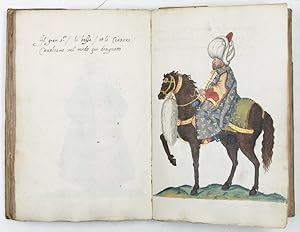
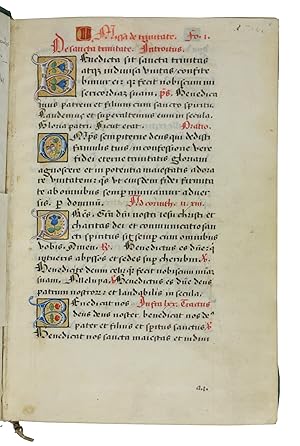
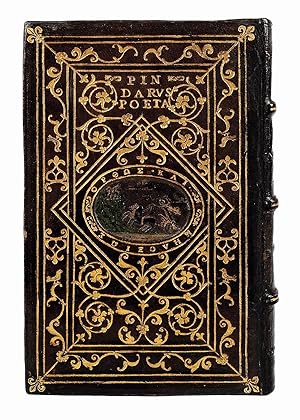
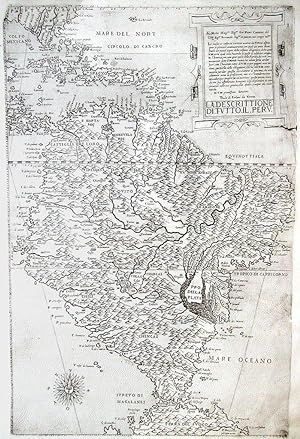
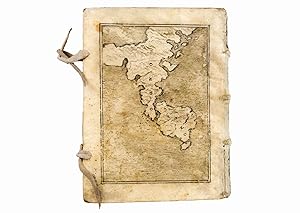
![Image du vendeur pour [Manuscript map of Terra Australis] mis en vente par Barry Lawrence Ruderman](https://pictures.abebooks.com/inventory/md/md31491407132.jpg)
![Image du vendeur pour [Heures à l'usage de Paris]. mis en vente par Librairie Camille Sourget](https://pictures.abebooks.com/inventory/md/md31552535766.jpg)
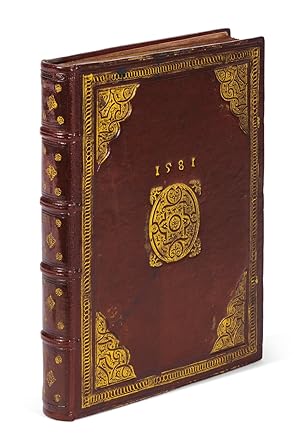
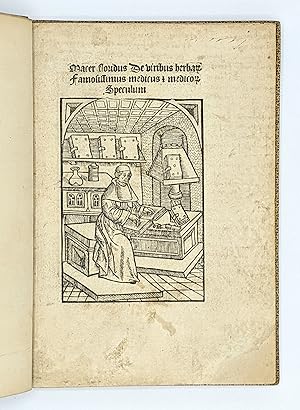

![Image du vendeur pour [Liber horarum - Use of Rouen]. mis en vente par Antiquariat INLIBRIS Gilhofer Nfg. GmbH](https://pictures.abebooks.com/inventory/md/md30797118902.jpg)
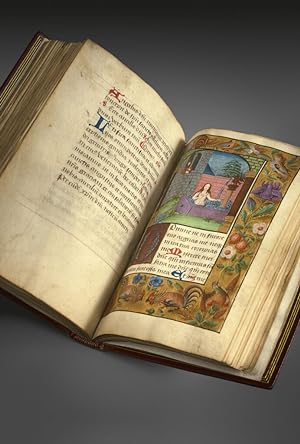
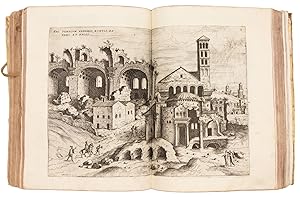
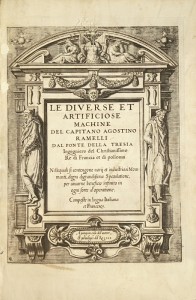

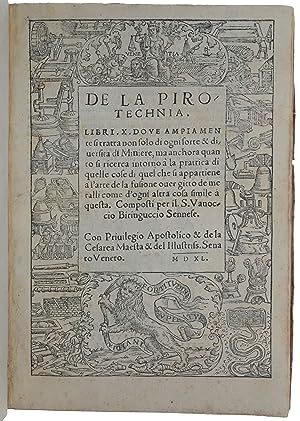
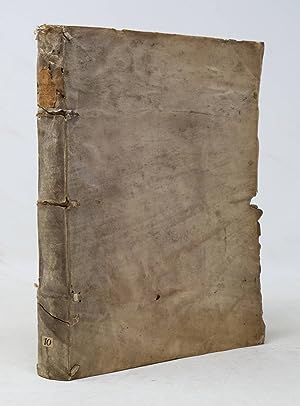
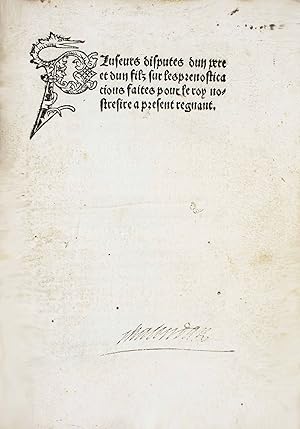
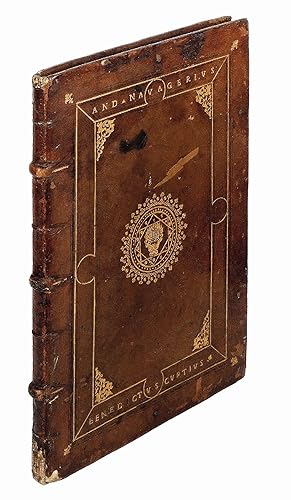
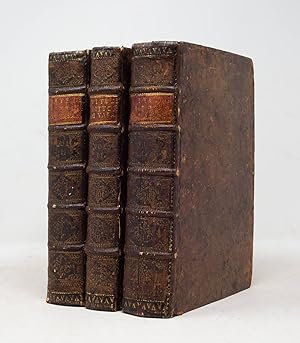
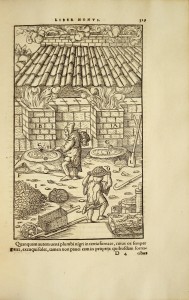
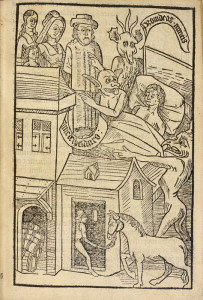
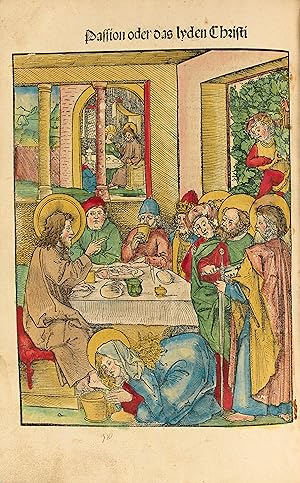

![Image du vendeur pour Opera di M. Bartolomeo Scappi, cvoco secreto di Papa Pio Quinto, divisa in sei libri. Nel primo si contiene il ragionamento che fa l Autore con Gio suo discepolo. Nel secondo si tratta di diverse vivande di carne, si di quadrupedi, come di volatili. Nel terzo si parla della Statura, e stagione de pesci. Nel quarto si mostrano le liste del presentar le vivande in tavola, cosi di grasso come di magro. Nel quinto si contiene l ordine di far diverse sorti di paste, & altri lavori. Nel sesto, & ultimo libro si ragiona de convale scenti, & molte altre sorti di vivande per gli infermi [ ]. mis en vente par Librairie Camille Sourget](https://pictures.abebooks.com/inventory/md/md31514613061.jpg)
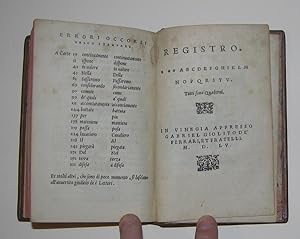
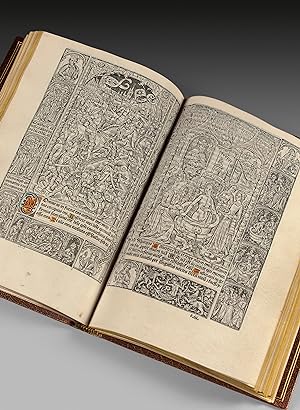
![Image du vendeur pour Indicarum historiarum ex oculatis et fidelissimis testibus perceptarum libri tres, quibus inferu[n]tur rerum quarundam apud Indos non citra miraculum fieri solitarum breves, & succinctae expositiones memoratu dignissimae, quÄ hactenus scriptis proditae non reperiantur. Autore Joanne Macro Jurisperito. Ad Opt. Clarissmúmque Senatorem Regium D. Joannem Blondum. Divionensem. Cum Privelegio mis en vente par Földvári Books](https://pictures.abebooks.com/inventory/md/md31777180100.jpg)
